Transforming Challenges into Achievements

9 Effective Differentiated Instruction Strategies for Special Needs Students
Special Education Classroom • 6/5/2024
What is Differentiated Instruction?
Differentiated instruction tailors learning experiences to meet students' diverse needs.
This approach is particularly helpful for special needs students who require individualized strategies to reach their full potential.
Differentiated instruction addresses their varied learning styles, abilities, and interests by modifying teaching methods, materials, and assessments.
Differentiated Instruction in Special Education Classrooms
Special education students often have distinct learning needs that require more personalized attention.
Differentiated instruction helps address these needs in many ways:
- Individualized Support: Customize instruction to each student's strengths and weaknesses to ensure they receive the appropriate level of support.
- Engagement: When teachers teach students in a way that resonates with their learning style, they are more likely to stay engaged and motivated.
- Promote Equity: Special needs students have the same learning opportunities as their peers in general education classrooms.
- Better Outcomes: Differentiated instruction meets students where they are; so it can lead to better academic outcomes and personal growth.
Strategies for Differentiated Instruction
1. flexible grouping.
This strategy involves students based on their learning needs, interests, or abilities.
Teachers rotate groups regularly to provide varied learning experiences and social interactions.
2. Tiered Assignments
Teachers create assignments with different levels of complexity for special needs students. This differentiated instruction strategy also allows each tier to align with the same learning goal, but it varies in difficulty to match students' abilities.
3. Choice Boards
Teachers provide students with activity options for the current lesson. Students choose tasks that interest them and suit their learning style.
4. Learning Stations
Set up different stations around the classroom, each focusing on a specific skill or activity.
Rotate students through the stations to ensure they experience a variety of learning modalities.
5. Varied Instructional Methods
Use a mix of visual, auditory, and kinesthetic teaching methods to address different learning styles.
Incorporate multimedia resources, hands-on activities, and discussions.
6. Ongoing Assessment and Feedback
Continuously assess students' progress through formative assessments. Provide timely and constructive feedback to guide their learning.
7. Personalized Learning Goals
Set individualized learning goals based on each student's needs and abilities. Use these goals to guide instruction and measure progress.
8. Adapted Materials
Modify instructional materials to make them accessible for all students and use larger print, audiobooks, or simplified texts to help students with experiencing different learning challenges
9. Collaborative Learning
Encourage peer collaboration through group projects and discussions. Enable a classroom community where students support each other's learning.
How to Implement Differentiated Instruction: A Step-by-Step Guide
1. Assess Student Needs: Assess each student's learning style, strengths, and areas for improvement, then use this information to plan differentiated instruction.
2. Plan Differentiated Lessons: Incorporate varied instructional strategies and materials in lesson plans and adjust them based on student responses.
3. Create a Supportive Environment: Create a classroom culture that values diversity and encourages risk-taking, providing a safe space for students to express their needs and preferences.
4. Implement and Monitor: Implement your differentiated instruction plans, monitor IEP progress , and adjust goals or strategies as needed.
5. Reflect and Adapt: Evaluate your strategies and get feedback to keep improving.
A Real-Life Example of Differentiated Instruction Strategies
Mrs. Thompson, a 5th-grade teacher, implemented differentiated instruction to teach a science lesson on the water cycle.
Her class included 20 students, with three special education students:
- Alex has ADHD and struggles with attention
- Maria has dyslexia and finds reading challenging
- Jamal is on the autism spectrum and prefers visual learning
Mrs. Thompson started with a brief video explaining the water cycle to engage all students.
She then divided the class into three groups based on their learning needs.
Alex joined a hands-on activity group where students created a water cycle model using common materials, allowing him to move and stay engaged.
Maria worked with a group, using simplified texts and graphic organizers to help her understand and summarize the process. She received additional support from a teaching assistant.
Jamal joined a group that focused on drawing and labeling diagrams of the water cycle, which catered to his strength in visual learning.
Throughout the lesson, Mrs. Thompson circulated among the groups, providing individualized support and ensuring each student could grasp the concepts at their own pace.
This approach not only helped the special education students but also enriched the learning experience for the entire class.
Related Posts

Differentiated Instruction Special Education
A teaching strategy known as Differentiated Instruction Special Education acknowledges that every student is different and learns differently. This approach is particularly crucial in special education because it enables teachers to address the unique needs of each kid rather than treating the entire class as a single homogeneous unit. Students with special needs can receive the assistance they require to succeed in the classroom through personalized education, such as co-teaching special education .
In this blog, we’ll look at how varied instruction can be used in special education settings and its benefits for improving student engagement and learning. Let’s explore the advantages of this strategy for our special education children now.

What Is Differentiated Instruction Special Education?
Differentiated instruction in special education refers to a teaching strategy that customizes lessons to each student’s needs in the group. This approach acknowledges that every student has different skills, learning preferences, and interests and that not every student will benefit equally from traditional, “one-size-fits-all” training.
This method is crucial in special education because it enables teachers to give specific support to students who have problems like ADHD, autism, or dyslexia . Small-group education, adaptable grouping, and the use of technology are just a few examples of the many ways that differentiated instruction can be delivered. Differentiated instruction , which adapts learning to each student’s requirements, can raise student progress and engagement in special education settings.
Differentiated Instruction Strategies
A teacher can modify instruction to match the unique needs of each student in the class by employing differentiated instruction tactics.
The following are some instances of differentiated education strategies:
- Flexible grouping : This tactic places less emphasis on age or grade level and more on skill level or preferred learning style when dividing students into groups. This enables teachers to give children who need it the most specialized teaching.
- Small group instruction : Working with a small number of students at once allows the teacher to give more personalized instruction and support.
- Tiered assignments : Using this technique, separate copies of an assignment are made for various skill levels, enabling students to work on activities suitable for their skills.
- Making use of technology : This tactic entails making use of technology, such as instructional software or online resources, to give students additional methods to learn about and interact with the subject matter. In particular, special education assistive technology can be incredibly useful in this context.
- Scaffolding : This technique entails dividing difficult activities into smaller, more manageable segments and giving pupils extra support and direction as they work through the assignment.
- Self-paced learning : This method substitutes a flexible curriculum by letting students work at their own pace and on assignments appropriate for their skill levels.
- Interest-based learning : This approach entails tailoring the curriculum to the student’s interests and leveraging their interests to direct instruction.
These are some examples of differentiated instruction strategies that teachers can use to meet the individual needs of each student in the class. By using various strategies, teachers can create a more inclusive and engaging learning environment for all students.

Why Is Differentiated Instruction Important in Special Education?
For a number of reasons, differentiated instruction is crucial in special education:
- Addressing their specific requirements is beneficial since special education kids frequently have needs that call for individualized instruction. When teachers use differentiated teaching, they may provide each kid with the help and modifications they need, whether they have ADHD, autism, or dyslexia.
- It increases student accomplishment and engagement: Students are more likely to be engaged and motivated to study when instruction is adapted to meet their unique needs and learning preferences. As a result, students may do better academically and experience better overall results.
- It encourages the development of an inclusive learning environment. Differentiated teaching contributes to developing an atmosphere where all students are valued and appreciated. This is crucial in special education settings because it prevents disabled kids from feeling excluded or marginalized.
- It promotes student autonomy. Instead of adhering to a predetermined curriculum, differentiated instruction techniques like self-paced learning allow students to work on assignments that are appropriate for their skills and interests. Students’ motivation and self-confidence may increase as a result.
- Students are better prepared for the real world because of differentiated instruction, which gives them the tools they need to succeed in a variety of settings.
Overall, differentiated instruction is a crucial strategy for special education teachers to consider since it can raise student accomplishment and engagement while fostering an inclusive learning environment that caters to each student’s needs.

Jennifer Hanson is a dedicated and seasoned writer specializing in the field of special education. With a passion for advocating for the rights and needs of children with diverse learning abilities, Jennifer uses her pen to educate, inspire, and empower both educators and parents alike.
Related Posts

Peer Mediated Instruction
Academic enrichment.

ChatGPT for Teachers
Trauma-informed practices in schools, teacher well-being, cultivating diversity, equity, & inclusion, integrating technology in the classroom, social-emotional development, covid-19 resources, invest in resilience: summer toolkit, civics & resilience, all toolkits, degree programs, trauma-informed professional development, teacher licensure & certification, how to become - career information, classroom management, instructional design, lifestyle & self-care, online higher ed teaching, current events, what is differentiated instruction examples of how to differentiate instruction in the classroom.
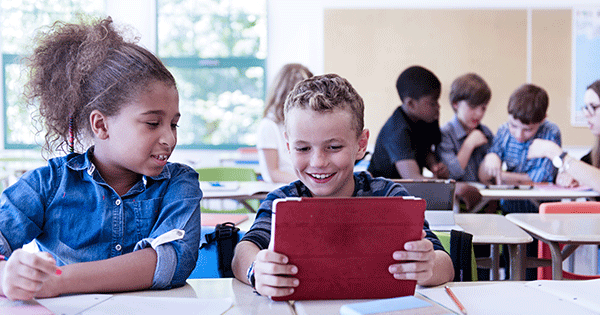
Just as everyone has a unique fingerprint, every student has an individual learning style. Chances are, not all of your students grasp a subject in the same way or share the same level of ability. So how can you better deliver your lessons to reach everyone in class? Consider differentiated instruction—a method you may have heard about but haven’t explored, which is why you’re here. In this article, learn exactly what it means, how it works, and the pros and cons.
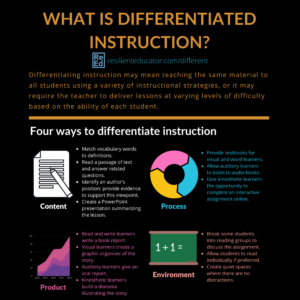
Definition of differentiated instruction
Carol Ann Tomlinson is a leader in the area of differentiated learning and professor of educational leadership, foundations, and policy at the University of Virginia. Tomlinson describes differentiated instruction as factoring students’ individual learning styles and levels of readiness first before designing a lesson plan. Research on the effectiveness of differentiation shows this method benefits a wide range of students, from those with learning disabilities to those who are considered high ability.
Differentiating instruction may mean teaching the same material to all students using a variety of instructional strategies, or it may require the teacher to deliver lessons at varying levels of difficulty based on the ability of each student.
Teachers who practice differentiation in the classroom may:
- Design lessons based on students’ learning styles.
- Group students by shared interest, topic, or ability for assignments.
- Assess students’ learning using formative assessment.
- Manage the classroom to create a safe and supportive environment.
- Continually assess and adjust lesson content to meet students’ needs.
History of differentiated instruction
The roots of differentiated instruction go all the way back to the days of the one-room schoolhouse, where one teacher had students of all ages in one classroom. As the educational system transitioned to grading schools, it was assumed that children of the same age learned similarly. However in 1912, achievement tests were introduced, and the scores revealed the gaps in student’s abilities within grade levels.
In 1975, Congress passed the Individuals with Disabilities Education Act (IDEA), ensuring that children with disabilities had equal access to public education. To reach this student population, many educators used differentiated instruction strategies. Then came the passage of No Child Left Behind in 2000, which further encouraged differentiated and skill-based instruction—and that’s because it works. Research by educator Leslie Owen Wilson supports differentiating instruction within the classroom, finding that lecture is the least effective instructional strategy, with only 5 to 10 percent retention after 24 hours. Engaging in a discussion, practicing after exposure to content, and teaching others are much more effective ways to ensure learning retention.
Four ways to differentiate instruction
According to Tomlinson, teachers can differentiate instruction through four ways: 1) content, 2) process, 3) product, and 4) learning environment.
As you already know, fundamental lesson content should cover the standards of learning set by the school district or state educational standards. But some students in your class may be completely unfamiliar with the concepts in a lesson, some students may have partial mastery, and some students may already be familiar with the content before the lesson begins.
What you could do is differentiate the content by designing activities for groups of students that cover various levels of Bloom’s Taxonomy (a classification of levels of intellectual behavior going from lower-order thinking skills to higher-order thinking skills). The six levels are: remembering, understanding, applying, analyzing, evaluating, and creating.
Students who are unfamiliar with a lesson could be required to complete tasks on the lower levels: remembering and understanding. Students with some mastery could be asked to apply and analyze the content, and students who have high levels of mastery could be asked to complete tasks in the areas of evaluating and creating.
Examples of differentiating activities:
- Match vocabulary words to definitions.
- Read a passage of text and answer related questions.
- Think of a situation that happened to a character in the story and a different outcome.
- Differentiate fact from opinion in the story.
- Identify an author’s position and provide evidence to support this viewpoint.
- Create a PowerPoint presentation summarizing the lesson.
Each student has a preferred learning style, and successful differentiation includes delivering the material to each style: visual, auditory and kinesthetic, and through words. This process-related method also addresses the fact that not all students require the same amount of support from the teacher, and students could choose to work in pairs, small groups, or individually. And while some students may benefit from one-on-one interaction with you or the classroom aide, others may be able to progress by themselves. Teachers can enhance student learning by offering support based on individual needs.
Examples of differentiating the process:
- Provide textbooks for visual and word learners.
- Allow auditory learners to listen to audio books.
- Give kinesthetic learners the opportunity to complete an interactive assignment online.
The product is what the student creates at the end of the lesson to demonstrate the mastery of the content. This can be in the form of tests, projects, reports, or other activities. You could assign students to complete activities that show mastery of an educational concept in a way the student prefers, based on learning style.
Examples of differentiating the end product:
- Read and write learners write a book report.
- Visual learners create a graphic organizer of the story.
- Auditory learners give an oral report.
- Kinesthetic learners build a diorama illustrating the story.
4. Learning environment
The conditions for optimal learning include both physical and psychological elements. A flexible classroom layout is key, incorporating various types of furniture and arrangements to support both individual and group work. Psychologically speaking, teachers should use classroom management techniques that support a safe and supportive learning environment.
Examples of differentiating the environment:
- Break some students into reading groups to discuss the assignment.
- Allow students to read individually if preferred.
- Create quiet spaces where there are no distractions.
Pros and cons of differentiated instruction
The benefits of differentiation in the classroom are often accompanied by the drawback of an ever-increasing workload. Here are a few factors to keep in mind:
- Research shows differentiated instruction is effective for high-ability students as well as students with mild to severe disabilities.
- When students are given more options on how they can learn material, they take on more responsibility for their own learning.
- Students appear to be more engaged in learning, and there are reportedly fewer discipline problems in classrooms where teachers provide differentiated lessons.
- Differentiated instruction requires more work during lesson planning, and many teachers struggle to find the extra time in their schedule.
- The learning curve can be steep and some schools lack professional development resources.
- Critics argue there isn’t enough research to support the benefits of differentiated instruction outweighing the added prep time.
Differentiated instruction strategies
What differentiated instructional strategies can you use in your classroom? There are a set of methods that can be tailored and used across the different subjects. According to Kathy Perez (2019) and the Access Center those strategies are tiered assignments, choice boards, compacting, interest centers/groups, flexible grouping, and learning contracts. Tiered assignments are designed to teach the same skill but have the students create a different product to display their knowledge based on their comprehension skills. Choice boards allow students to choose what activity they would like to work on for a skill that the teacher chooses. On the board are usually options for the different learning styles; kinesthetic, visual, auditory, and tactile. Compacting allows the teacher to help students reach the next level in their learning when they have already mastered what is being taught to the class. To compact the teacher assesses the student’s level of knowledge, creates a plan for what they need to learn, excuses them from studying what they already know, and creates free time for them to practice an accelerated skill.
Interest centers or groups are a way to provide autonomy in student learning. Flexible grouping allows the groups to be more fluid based on the activity or topic. Finally, learning contracts are made between a student and teacher, laying out the teacher’s expectations for the necessary skills to be demonstrated and the assignments required components with the student putting down the methods they would like to use to complete the assignment. These contracts can allow students to use their preferred learning style, work at an ideal pace and encourages independence and planning skills. The following are strategies for some of the core subject based on these methods.
Differentiated instruction strategies for math
- Provide students with a choice board. They could have the options to learn about probability by playing a game with a peer, watching a video, reading the textbook, or working out problems on a worksheet.
- Teach mini lessons to individuals or groups of students who didn’t grasp the concept you were teaching during the large group lesson. This also lends time for compacting activities for those who have mastered the subject.
- Use manipulatives, especially with students that have more difficulty grasping a concept.
- Have students that have already mastered the subject matter create notes for students that are still learning.
- For students that have mastered the lesson being taught, require them to give in-depth, step-by-step explanation of their solution process, while not being rigid about the process with students who are still learning the basics of a concept if they arrive at the correct answer.
Differentiated instruction strategies for science
- Emma McCrea (2019) suggests setting up “Help Stations,” where peers assist each other. Those that have more knowledge of the subject will be able to teach those that are struggling as an extension activity and those that are struggling will receive.
- Set up a “question and answer” session during which learners can ask the teacher or their peers questions, in order to fill in knowledge gaps before attempting the experiment.
- Create a visual word wall. Use pictures and corresponding labels to help students remember terms.
- Set up interest centers. When learning about dinosaurs you might have an “excavation” center, a reading center, a dinosaur art project that focuses on their anatomy, and a video center.
- Provide content learning in various formats such as showing a video about dinosaurs, handing out a worksheet with pictures of dinosaurs and labels, and providing a fill-in-the-blank work sheet with interesting dinosaur facts.
Differentiated instruction strategies for ELL
- ASCD (2012) writes that all teachers need to become language teachers so that the content they are teaching the classroom can be conveyed to the students whose first language is not English.
- Start by providing the information in the language that the student speaks then pairing it with a limited amount of the corresponding vocabulary in English.
- Although ELL need a limited amount of new vocabulary to memorize, they need to be exposed to as much of the English language as possible. This means that when teaching, the teacher needs to focus on verbs and adjectives related to the topic as well.
- Group work is important. This way they are exposed to more of the language. They should, however, be grouped with other ELL if possible as well as given tasks within the group that are within their reach such as drawing or researching.
Differentiated instruction strategies for reading
- Tiered assignments can be used in reading to allow the students to show what they have learned at a level that suites them. One student might create a visual story board while another student might write a book report.
- Reading groups can pick a book based on interest or be assigned based on reading level
- Erin Lynch (2020) suggest that teachers scaffold instruction by giving clear explicit explanations with visuals. Verbally and visually explain the topic. Use anchor charts, drawings, diagrams, and reference guides to foster a clearer understanding. If applicable, provide a video clip for students to watch.
- Utilize flexible grouping. Students might be in one group for phonics based on their assessed level but choose to be in another group for reading because they are more interested in that book.
Differentiated instruction strategies for writing
- Hold writing conferences with your students either individually or in small groups. Talk with them throughout the writing process starting with their topic and moving through grammar, composition, and editing.
- Allow students to choose their writing topics. When the topic is of interest, they will likely put more effort into the assignment and therefore learn more.
- Keep track of and assess student’s writing progress continually throughout the year. You can do this using a journal or a checklist. This will allow you to give individualized instruction.
- Hand out graphic organizers to help students outline their writing. Try fill-in-the-blank notes that guide the students through each step of the writing process for those who need additional assistance.
- For primary grades give out lined paper instead of a journal. You can also give out differing amounts of lines based on ability level. For those who are excelling at writing give them more lines or pages to encourage them to write more. For those that are still in the beginning stages of writing, give them less lines so that they do not feel overwhelmed.
Differentiated instruction strategies for special education
- Use a multi-sensory approach. Get all five senses involved in your lessons, including taste and smell!
- Use flexible grouping to create partnerships and teach students how to work collaboratively on tasks. Create partnerships where the students are of equal ability, partnerships where once the student will be challenged by their partner and another time they will be pushing and challenging their partner.
- Assistive technology is often an important component of differential instruction in special education. Provide the students that need them with screen readers, personal tablets for communication, and voice recognition software.
- The article Differentiation & LR Information for SAS Teachers suggests teachers be flexible when giving assessments “Posters, models, performances, and drawings can show what they have learned in a way that reflects their personal strengths”. You can test for knowledge using rubrics instead of multiple-choice questions, or even build a portfolio of student work. You could also have them answer questions orally.
- Utilize explicit modeling. Whether its notetaking, problem solving in math, or making a sandwich in home living, special needs students often require a step-by-step guide to make connections.
References and resources
- https://www.thoughtco.com/differentiation-instruction-in-special-education-3111026
- https://sites.google.com/site/lrtsas/differentiation/differentiation-techniques-for-special-education
- https://www.solutiontree.com/blog/differentiated-reading-instruction/
- https://www.readingrockets.org/article/differentiated-instruction-reading
- https://www.sadlier.com/school/ela-blog/13-ideas-for-differentiated-reading-instruction-in-the-elementary-classroom
- https://inservice.ascd.org/seven-strategies-for-differentiating-instruction-for-english-learners/
- https://www.cambridge.org/us/education/blog/2019/11/13/three-approaches-differentiation-primary-science/
- https://www.brevardschools.org/site/handlers/filedownload.ashx?moduleinstanceid=6174&dataid=8255&FileName=Differentiated_Instruction_in_Secondary_Mathematics.pdf
Books & Videos about differentiated instruction by Carol Ann Tomlinson and others
- The Differentiated Classroom: Responding to the Needs of All Learners, 2nd Edition
- Leading and Managing a Differentiated Classroom – Carol Ann Tomlinson and Marcia B. Imbeau
- The Differentiated School: Making Revolutionary Changes in Teaching and Learning – Carol Ann Tomlinson, Kay Brimijoin, and Lane Narvaez
- Integrating Differentiated Instruction and Understanding by Design: Connecting Content and Kids – Carol Ann Tomlinson and Jay McTighe
- Differentiation in Practice Grades K-5: A Resource Guide for Differentiating Curriculum – Carol Ann Tomlinson and Caroline Cunningham Eidson
- Differentiation in Practice Grades 5–9: A Resource Guide for Differentiating Curriculum – Carol Ann Tomlinson and Caroline Cunningham Eidson
- Differentiation in Practice Grades 9–12: A Resource Guide for Differentiating Curriculum – Carol Ann Tomlinson and Cindy A. Strickland
- Fulfilling the Promise of the Differentiated Classroom: Strategies and Tools for Responsive Teaching – Carol Ann Tomlinson
- Leadership for Differentiating Schools and Classrooms – Carol Ann Tomlinson and Susan Demirsky Allan
- How to Differentiate Instruction in Academically Diverse Classrooms, 3rd Edition by Carol Ann Tomlinson
- Assessment and Student Success in a Differentiated Classroom by Carol Ann Tomlinson and Tonya R. Moon
- How To Differentiate Instruction In Mixed Ability Classrooms 2nd Edition – Carol Ann Tomlinson
- How to Differentiate Instruction in Academically Diverse Classrooms 3rd Edition by Carol Ann Tomlinson
- Assessment and Student Success in a Differentiated Classroom Paperback – Carol Ann Tomlinson, Tonya R. Moon
- Leading and Managing a Differentiated Classroom (Professional Development) 1st Edition – Carol Ann Tomlinson, Marcia B. Imbeau
- The Differentiated School: Making Revolutionary Changes in Teaching and Learning 1st Edition by Carol Ann Tomlinson, Kay Brimijoin, Lane Narvaez
- Differentiation and the Brain: How Neuroscience Supports the Learner-Friendly Classroom – David A. Sousa, Carol Ann Tomlinson
- Leading for Differentiation: Growing Teachers Who Grow Kids – Carol Ann Tomlinson, Michael Murphy
- An Educator’s Guide to Differentiating Instruction. 10th Edition – Carol Ann Tomlinson, James M. Cooper
- A Differentiated Approach to the Common Core: How do I help a broad range of learners succeed with a challenging curriculum? – Carol Ann Tomlinson, Marcia B. Imbeau
- Managing a Differentiated Classroom: A Practical Guide – Carol Tomlinson, Marcia Imbeau
- Differentiating Instruction for Mixed-Ability Classrooms: An ASCD Professional Inquiry Kit Pck Edition – Carol Ann Tomlinson
- Using Differentiated Classroom Assessment to Enhance Student Learning (Student Assessment for Educators) 1st Edition – Tonya R. Moon, Catherine M. Brighton, Carol A. Tomlinson
- The Differentiated Classroom: Responding to the Needs of All Learners 1st Edition – Carol Ann Tomlinson
You may also like to read
- Creative Academic Instruction: Music Resources for the Classroom
- How Teachers Use Student Data to Improve Instruction
- Advice on Positive Classroom Management that Works
- Five Skills Online Teachers Need for Classroom Instruction
- 3 Examples of Effective Classroom Management
- Advice on Improving your Elementary Math Instruction

Categorized as: Tips for Teachers and Classroom Resources
Tagged as: Curriculum and Instruction , Diversity , Engaging Activities , New Teacher , Pros and Cons
- Certificates in Administrative Leadership
- Trauma-Informed Practices in School: Teaching...
- Certificates for Reading Specialist
CTL Drop-in Office Hours
Drop by any time from 10 a.m. to 3 p.m. and discuss your teaching-related questions and ideas at a convenient location: Oct 4, Coupa Cafe (Y2E2) | Oct 31, Coupa Cafe (Green Library) | Nov 21, Blend@Annette’s Cafe
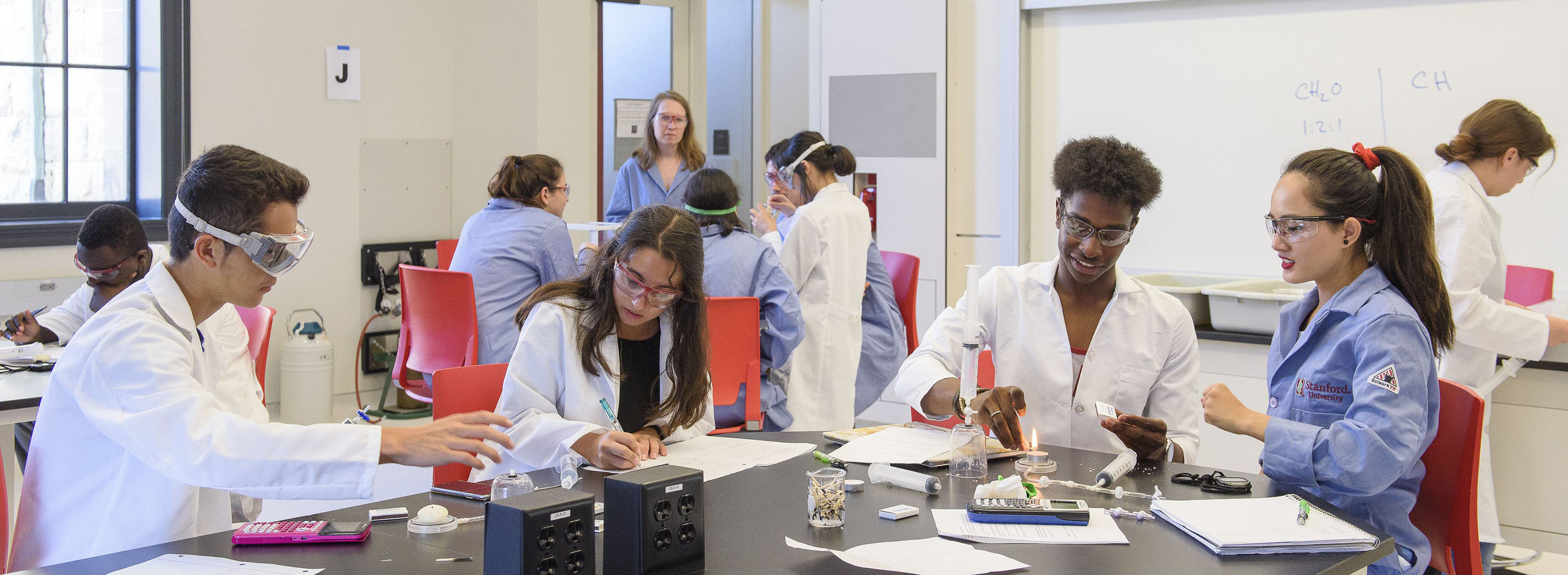
Differentiated Instruction
Differentiated instruction involves teaching in a way that meets the different needs and interests of students using varied course content, activities, and assessments.
Teaching differently to different students
Differentiated Instruction (DI) is fundamentally the attempt to teach differently to different students, rather than maintain a one-size-fits-all approach to instruction. Other frameworks, such as Universal Design for Learning , enjoin instructors to give students broad choice and agency to meet their diverse needs and interests. DI distinctively emphasizes instructional methods to promote learning for students entering a course with different readiness for, interest in, and ways of engaging with course learning based on their prior learning experiences ( Dosch and Zidon 2014).
Successful implementation of DI requires ongoing training, assessment, and monitoring (van Geel et al. 2019) and has been shown to be effective in meeting students’ different needs, readiness levels, and interests (Turner et al. 2017). Below, you can find six categories of DI instructional practices that span course design and live teaching.
While some of the strategies are best used together, not all of them are meant to be used at once, as the flexibility inherent to these approaches means that some of them are diverging when used in combination (e.g., constructing homogenous student groups necessitates giving different types of activities and assessments; constructing heterogeneous student groups may pair well with peer tutoring) (Pozas et al. 2020). The learning environment the instructor creates with students has also been shown to be an important part of successful DI implementation (Shareefa et al. 2019).
Differentiated Assessment
Differentiated assessment is an aspect of Differentiated Instruction that focuses on tailoring the ways in which students can demonstrate their progress to their varied strengths and ways of learning. Instead of testing recall of low-level information, instructors should focus on the use of knowledge and complex reasoning. Differentiation should inform not only the design of instructors’ assessments, but also how they interpret the results and use them to inform their DI practices.
More Team Project Ideas
Steps to consider
There are generally considered to be six categories of useful differentiated instruction and assessment practices (Pozas & Schneider 2019):
- Making assignments that have tasks and materials that are qualitatively and/or quantitatively varied (according to “challenge level, complexity, outcome, process, product, and/or resources”) (IP Module 2: Integrating Peer-to-Peer Learning) It’s helpful to assess student readiness and interest by collecting data at the beginning of the course, as well as to conduct periodic check-ins throughout the course (Moallemi 2023 & Pham 2011)
- Making student working groups that are intentionally chosen (that are either homogeneous or heterogeneous based on “performance, readiness, interests, etc.”) (IP Module 2: Integrating Peer-to-Peer Learning) Examples of how to make different student groups provided by Stanford CTL (Google Doc)
- Making tutoring systems within the working group where students teach each other (IP Module 2: Integrating Peer-to-Peer Learning) For examples of how to support peer instruction, and the benefits of doing so, see for example Tullis & Goldstone 2020 and Peer Instruction for Active Learning (LSA Technology Services, University of Michigan)
- Making non-verbal learning aids that are staggered to provide support to students in helping them get to the next step in the learning process (only the minimal amount of information that is needed to help them get there is provided, and this step is repeated each time it’s needed) (IP Module 4: Making Success Accessible) Non-verbal cue cards support students’ self-regulation, as they can monitor and control their progress as they work (Pozas & Schneider 2019)
- Making instructional practices that ensure all students meet at least the minimum standards and that more advanced students meet higher standards , which involves monitoring students’ learning process carefully (IP Module 4: Making Success Accessible; IP Module 5: Giving Inclusive Assessments) This type of approach to student assessment can be related to specifications grading, where students determine the grade they want and complete the modules that correspond to that grade, offering additional motivation to and reduced stress for students and additional flexibility and time-saving practices to instructors (Hall 2018)
- Making options that support student autonomy in being responsible for their learning process and choosing material to work on (e.g., students can choose tasks, project-based learning, portfolios, and/or station work, etc.) (IP Module 4: Making Success Accessible) This option, as well as the others, fits within a general Universal Design Learning framework , which is designed to improve learning for everyone using scientific insights about human learning
Hall, M (2018). “ What is Specifications Grading and Why Should You Consider Using It? ” The Innovator Instructor blog, John Hopkins University Center for Teaching Excellence and Innovation.
Moallemi, R. (2023). “ The Relationship between Differentiated Instruction and Learner Levels of Engagement at University .” Journal of Research in Integrated Teaching and Learning (ahead of print).
Pham, H. (2011). “ Differentiated Instruction and the Need to Integrate Teaching and Practice .” Journal of College Teaching and Learning , 9(1), 13-20.
Pozas, M. & Schneider, C. (2019). " Shedding light into the convoluted terrain of differentiated instruction (DI): Proposal of a taxonomy of differentiated instruction in the heterogeneous classroom ." Open Education Studies , 1, 73–90.
Pozas, M., Letzel, V. and Schneider, C. (2020). " Teachers and differentiated instruction: exploring differentiation practices to address student diversity ." Journal of Research in Special Educational Needs , 20: 217-230.
Shareefa, M. et al. (2019). “ Differentiated Instruction: Definition and Challenging Factors Perceived by Teachers .” Proceedings of the 3rd International Conference on Special Education (ICSE 2019).
Tullis, J.G. & Goldstone, R.L. (2020). “ Why does peer instruction benefit student learning? ”, Cognitive Research 5 .
Turner, W.D., Solis, O.J., and Kincade, D.H. (2017). “ Differentiating Instruction for Large Classes in Higher Education ”, International Journal of Teaching and Learning in Higher Education , 29(3), 490-500.
van Geel, M., Keuning, T., Frèrejean, J., Dolmans, D., van Merriënboer, J., & Visscher A.J. (2019). “Capturing the complexity of differentiated instruction”, School Effectiveness and School Improvement , 30:1, 51-67, DOI: 10.1080/09243453.2018.1539013

Differentiated Instruction Strategies for the Special Education Classroom
- April 17, 2024
- Collaboration , IEPs , Teaching Tips
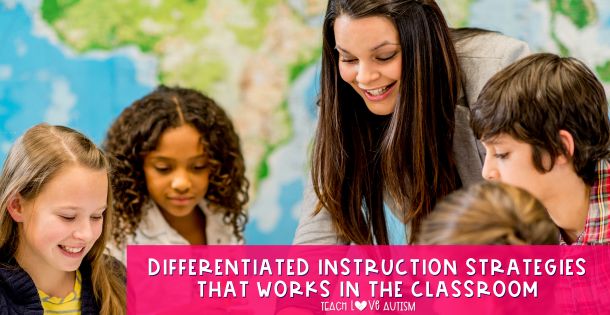
As special education teachers, differentiated instruction can be tough. Meeting the diverse needs of students with a wide range of abilities and learning styles is not easy. Differentiation is a fundamental strategy that allows you to tailor instruction to accommodate these varied needs effectively. In this blog post, we’ll explore the importance of differentiation in special education. Look at practical methods to differentiate instruction, and strategies for managing your classroom to enhance learning for all students.
Why is differentiation important in special education?
Differentiation in special education is critical because it addresses the unique learning profiles of each student. Special education students may have disabilities that range from mild learning difficulties to more significant cognitive, emotional, or physical challenges. Differentiation ensures that each student receives instruction in a manner that best suits their strengths and needs.
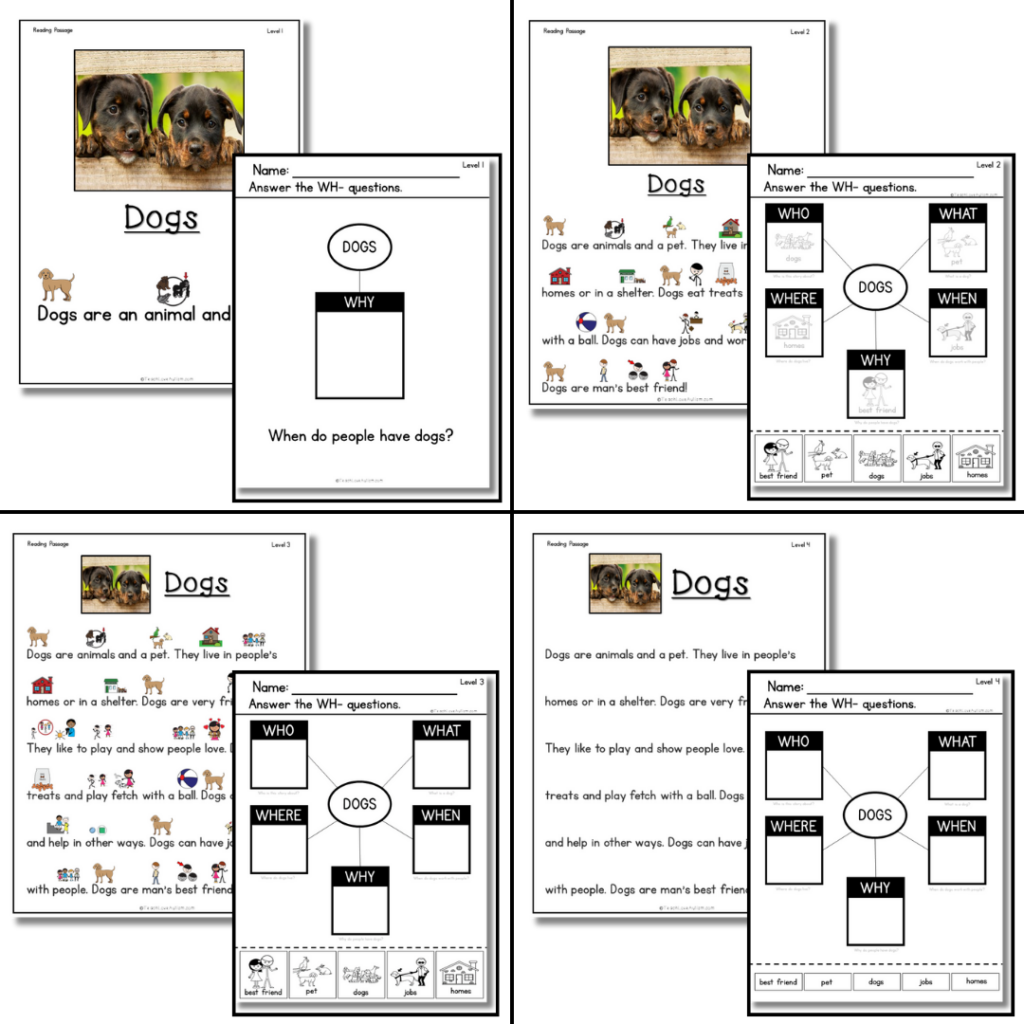
For instance, while one student may excel in visual learning, using graphic organizers and images, another might benefit more from auditory methods like oral storytelling or music. By employing a variety of instructional strategies, teachers can create a more inclusive and engaging learning environment that fosters better educational outcomes.
How can you effectively use differentiated instruction?

Differentiating instruction in a special education classroom can seem daunting. It becomes manageable through systematic planning and the use of specific techniques. Here are some methods you can try:
- Adjusting Content : Tailor what students learn by modifying the complexity of the information or by presenting it in different formats. For example, using simplified text or providing a more detailed explanation as needed can make the content accessible to all learners.
- Varying Process : Adapt the way students access material. This could involve grouping students by shared interest, topic, or ability for assignments, using technology to aid learning, or providing different resources such as interactive apps for those who may benefit from hands-on engagement.
- Modifying Products : Allow students to demonstrate their understanding in various ways. Instead of a traditional written test, some students might benefit from creating a visual project or participating in a group presentation.
- Implementing Flexible Grouping : Rotate the composition of student groups to promote social skills and minimize labeling. This approach allows all students to work with others who have both similar and different abilities, fostering a cooperative learning environment.
What are some practical examples of differentiated instruction in the classroom?
To better illustrate how differentiation might look in practice, consider these scenarios:
- Literature Study : When studying a book, provide different reading levels of the text to cater to various students’ abilities. You can also offer audio recordings for students who process auditory information more effectively. Activities related to the book could include traditional essays, creative storytelling, or even dramatic reenactments, depending on each student’s strengths.
- Math Concepts : For teaching a new mathematical concept, use manipulatives, visual aids, and technology-based tools to explain complex ideas. Offer differentiated worksheets where the level of difficulty is adjusted to meet the needs of each student. Some might work on basic skills while others tackle application problems or more challenging tasks.
- Science Experiments : In a science class, instructions for experiments can be provided in both text and video formats. Provide additional staff or peer support for students who may need help with the physical aspects of the experiment. Assess understanding through various means, from written lab reports to verbal explanations or visual diagrams.
How would I incorporate differentiated instruction into a student’s IEP?

Additionally, there are different places in an IEP (individualized education program ) that you want to highlight that a student benefits from differentiated instruction. Keep in mind that when we write an IEP it needs to provide others with a clear picture of what the student can do and what they need continued support with to learn.
Present Levels
This part of the IEP is meant to tell the story about the student. This is the perfect place to describe what the student does in the classroom and the support they need to succeed. Be sure to add in if you differentiate instruction for the student what it looks like, what tools you use, and how it supports them. The more descriptive you are the easier it will be for others to provide the same consistent support. This could be parents , related service providers, co-teachers, and even future teachers the student may have.
SDIs, Modifications, Accommodations
Depending on the school this can be the same section of the IEP but called a different name. We add specific supports the student needs and also name the exact environment it’s used. This is the most direct way to add differentiation supports in for a student. Some examples could be in different forms such as:
Instructional Approaches
- Teachers can create small groups based on ability levels or learning styles to provide more focused instruction and allow students to work collaboratively.
- Assignments are designed at different levels of complexity to match students’ readiness levels, ensuring each student is challenged appropriately.
- Various stations around the classroom focus on different skills or concepts, allowing students to rotate through and engage with the material in different ways.
- Students watch instructional videos or read materials at home and then come to class prepared to engage in hands-on activities or discussions, allowing for more individualized support in the classroom.
Adapted Tools
- Tools like Venn diagrams, flowcharts, and concept maps help students organize information visually, aiding comprehension and retention.
- Audiobooks provide an alternative for students who struggle with reading by allowing them to access the same content through listening.
- Tools such as screen readers, speech-to-text software, or visual timers can assist students with specific needs, helping them engage with the material more effectively.
- Physical objects like counting blocks, geometric shapes, or word tiles help students grasp abstract concepts through tactile, hands-on learning.
Teaching Materials
- Books at varying reading levels enable students to practice reading with texts that match their abilities, promoting growth in literacy skills.
- Students can use notebooks that include a mix of writing, drawing, and activities to personalize their learning experience and reinforce concepts.
- Offering different genres, such as fiction, nonfiction, poetry, and a variety of formats like articles, videos, or podcasts caters to diverse learning styles and interests.
- Charts, graphs, images, schedules, and videos enhance understanding for visual learners and can simplify complex concepts for all students.
Related Services and Supports
This section outlines the services and support the student will receive. This section may not seem as obvious to use for differentiation. All members of the IEP team must be on the same page and are as consistent as possible with delivering instruction as the student needs. During an annual IEP meeting, I recommend that team meetings are a support added to the IEP. This allows the team to meet usually monthly, or bi-monthly to check in on the student’s progress, and ensure everyone is using the same practices to support the student. This needs to be an IEP team decision, and parents may have to advocate for it.
Getting started? First, try this for differentiated instruction.

Differentiated instruction should not be complicated. We sometimes think that an intervention or strategy that we use in the classroom has to have some drastically different approach which is not true. Just like how we look at a student’s educational placement we always aim for the LRE (least restrictive environment). We do this because we don’t want to provide more support than is necessary for the student and we want to ensure they have access to an appropriate education. With differentiation, we can use that same approach to not intervene in a student’s ability to complete any task more than necessary.
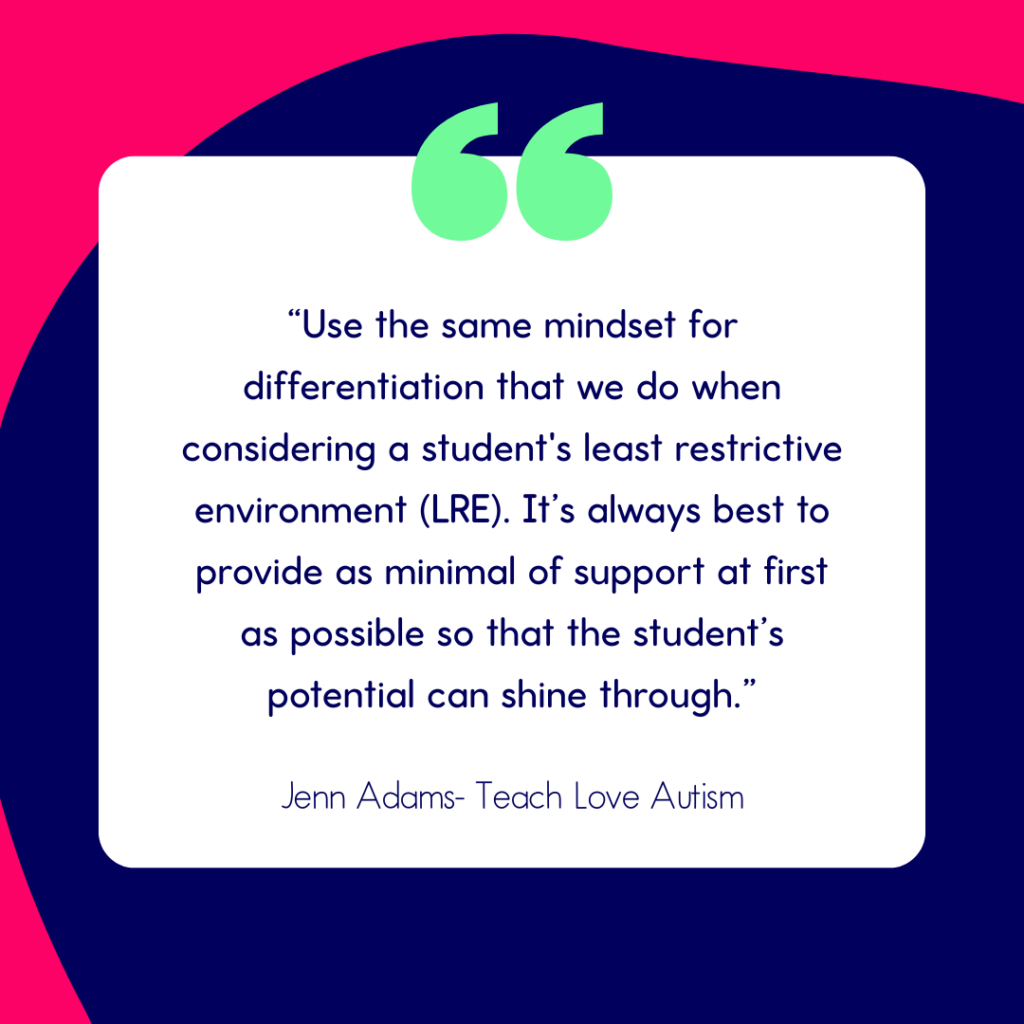
Here’s an example:
A student who struggles with understanding the quantity that a number represents may have better success with visuals to support when they have to complete a math worksheet. But, the teacher doesn’t have to create something on the computer, print, and laminate cards with visuals on them. The teacher can simply use the margin of the worksheet the student is completing to create a quick visual representation to help the student.
Suppose the teacher didn’t use that simple mode of differentiation. In that case, they may spend hours buying resources, getting out manipulatives, and providing way more support than the student needs. When it comes to differentiation to start, less is more. We can’t put too many interventions in place, otherwise we will never know which one is providing the students the support they need.
Differentiation is not just a special education teaching strategy but a philosophy that embodies the belief that all students can learn and succeed in any type of classroom. By differentiating instruction, special education teachers can provide a more equitable educational experience that respects and values the diverse abilities of all students. Remember, the goal of differentiation is to make learning accessible and engaging for each student, helping them achieve their individual best.
Materials I’d Recommend for Differentiated Instruction:
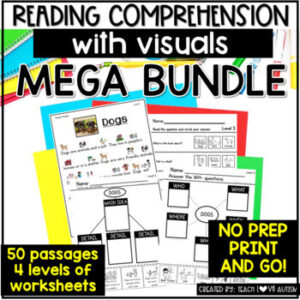
teachloveautism
🌟 Special Education Teacher + Coach 💡 Empowering teachers with strategies & resources to support diverse learners 📧 [email protected]

What are you looking for?
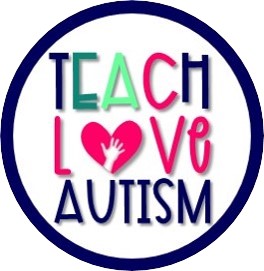
Shop My Account Cart Wishlist Freebies
Behavior Curriculum Work Tasks Life Skills Morning Meeting
© 2024 TEACH LOVE AUTISM. Terms and Conditions.
Initial Thoughts
Perspectives & resources, what is differentiated instruction, page 1: defining differentiated instruction.
- Page 2: General Principles
How do teachers differentiate instruction?
- Page 3: Know Your Students
- Page 4: Differentiate Instructional Elements
- Page 5: Differentiate Content
- Page 6: Differentiate Process
- Page 7: Differentiate Product
- Page 8: Evaluate and Grade Student Performance
How do teachers prepare their students and their classrooms for differentiated instruction?
- Page 9: Communicate with Students and Parents
- Page 10: Organize the Classroom
- Page 11: Employ Effective Behavior Management
What does differentiated instruction look like in the classroom?
- Page 12: Classroom Implementation
- Page 13: References & Additional Resources
- Page 14: Credits

- Employing effective classroom management procedures
- Grouping students for instruction (especially students with significant learning problems)
- Assessing readiness
- Teaching to the student’s zone of proximal development
Although differentiated instruction as a whole is yet to be validated by scientific research, a growing body of evidence shows that the approach has positive effects on student learning.
Research Shows
- Strategies used to differentiate instructional and assessment tasks for English language learners, gifted students, and struggling students were also effective for other students in the classroom. McQuarrie, McRae, & Stack-Cutler (2008)
- Students with learning disabilities received more benefits from differentiated instruction than did their grade-level peers. McQuarrie, McRae, & Stack-Cutler (2008)
- In one study, the reading skills of elementary- and middle-school students who participated in a reading program that incorporated differentiated instruction improved compared to the reading skills of students who did not receive the program. Baumgartner, Lipowski, & Rush (2003)
In addition to using the kinds of evidence-based strategies listed above, teachers who differentiate instruction often:
- Use a variety of instructional approaches
- Alter assignments to meet the needs of the students
- Assess students on an ongoing basis to determine their readiness levels
- Use assessment results to adjust instruction as needed
- Provide a variety of options for how students can learn and demonstrate their knowledge
- Strive to make lessons engaging and meaningful
- Employ different grouping formats for instruction (e.g., whole-class, small groups, independent instruction) and use flexible grouping
flexible grouping
A fluid or dynamic method of grouping students. Rather than being set, group membership changes to meet the different needs of the students.
Click here to see the attributes of a traditional classroom contrasted with those of a differentiated classroom.
| Traditional Classroom | Differentiated Classroom |
| Instruction is teacher centered. | Instruction is student centered. |
| Instruction is largely provided in a whole-group setting. | Different grouping formats (e.g., whole-group, small-group, pairs) are used for instruction. |
| When teachers assign students to work in groups, the groups are usually static, based on achievement level (e.g., low, middle, and high achievers). | Teachers employ flexible grouping practices based on the students’ learning needs and interests. |
| Teachers target instruction at the level of the middle achievers. | Teachers assign challenging and engaging tasks to everyone in the class. |
| Instruction is provided one way (e.g., via lecture). | Instruction is provided in multiple ways (e.g., via lecture, modeling, hands-on, visual representations) |
| Instructional tasks are aligned with grade-level standards. | While aligning with grade-level standards, instructional tasks are designed to address students’ needs and differences. |
| The teacher relies on a single textbook to present information. | The teacher uses a variety of materials (e.g., textbooks from multiple grade levels, computer software) to present information. |
| The teacher assigns the same assignment to all students. | The teacher offers several assignment choices. |
| The teacher assesses the students’ knowledge of a unit usually with a written test. | Although the teacher may give a written test at the end of the unit, he also provides the students with several options (e.g., written report, model, video) to demonstrate their knowledge. |
| Teachers use to assess the students’ knowledge.
An evaluation administered to measure student learning outcomes, typically at the end of a unit or chapter. Often used to evaluate whether a student has mastered the content or skill. | In addition to summative assessment, the teachers use to guide instruction.
A system of providing continual feedback about preconceptions and performances to both learners and instructors; an ongoing evaluation of student learning. |
| “Fair” means that every student works on the same tasks. | “Fair” means that each student works a task, which may be the same or different than their peers’, to meet his or her needs. |
| “Success” means making a good grade or mastering the material. | “Success” refers to an individual student’s academic growth. |
Teachers often have a number of misperceptions about differentiated instruction. Carol Ann Tomlinson addresses two of these (time: 1:33).

Carol Ann Tomlinson, EdD Professor of Educational Leadership, Foundations, and Policy The University of Virginia Charlottesville, VA
View Transcript
Transcript: Carol Ann Tomlinson, EdD
One is it takes too much time to plan, but the other is it takes too much time in a classroom to differentiate. The planning piece, of course, is a matter of saying differentiation doesn’t say spend an hour planning tonight like you always did and then add differentiation to it. What it would say is, if you have an hour to plan, think about how you can do that in a way that’s going to work for kids. And, again, if you go slowly it doesn’t need to eat your life in any way at all. But the issue in terms of it takes too much time in class is an intriguing one to me because it turns out that differentiation is not what takes extra time in class. What takes extra time in class is giving kids chances to work with ideas and manipulate ideas and come to own the information. It doesn’t take as long just to tell kids things or just to cover standards, but we also don’t have any evidence that students come away with understanding or the capacity to use what they’ve learned to transfer knowledge. When you take time to let kids think and make meaning of stuff, that slows us down some in terms of coverage. If you let kids make meaning of stuff in two different ways, or if you let kids make meaning of stuff working alone or working with somebody, or if you let kids making make meaning working independently or working with a teacher, that doesn’t take any longer. Where it got to take longer was in the making meaning part.
For Your Information
What is the difference between differentiated instruction and Universal Design for Learning (UDL)?
Both attempt to maximize the learning of all students by offering multiple ways to learn content or skills and to demonstrate that knowledge. Additionally, both emphasize learning environments that are engaging and utilize ongoing assessments to make adjustments to meet the instructional needs of students. So what is the difference? The difference is in when and how changes are made to address the needs of students.
| Differentiated Instruction | Universal Design for Learning | |
| When | During instruction when the teacher notices the students’ needs | When designing the curriculum |
| How | Makes changes or adjustments to the curriculum | Builds resources and options into the curriculum |
CAST, Inc. (2007)
How does response to intervention (RTI) fit in with differentiated instruction?
response to intervention (RTI)
A multi-tiered method for delivering instruction to learners through increasingly intensive and individualized interventions.
Both are instructional frameworks. Whereas the purpose of differentiated instruction is to address the needs of all students, the purpose of RTI is to identify and address the needs of struggling students. Though the two frameworks overlap—differentiated instruction is often provided in an RTI classroom—under RTI, students may receive more intensive levels of instruction than they would normally receive in a differentiated classroom.
How do adaptations (i.e., accommodations and modifications) fit with differentiated instruction?
Differentiated instruction might not be enough for some students to succeed. Those with disabilities might need additional supports—accommodations or modifications—to learn the concepts and skills being taught. These supports are identified in the student’s individual education program (IEP) .
individualized education program (IEP)
A written plan used to delineate an individual student’s current level of development and his or her learning goals, as well as to specify any accommodations, modifications, and related services that a student might need to attend school and maximize his or her learning.
All Subjects
4.2 Differentiated instruction
7 min read • august 21, 2024
Differentiated instruction tailors teaching methods to diverse student needs, abilities, and learning styles in special education classrooms. This approach enhances learning outcomes by addressing individual differences and promotes inclusive education by accommodating various learning profiles within a single lesson.
Key principles include a proactive approach based on student variance, flexible teaching methods, and ongoing assessment. Components involve differentiating content, process, product, and learning environment. Assessment strategies, planning considerations, and various instructional techniques are crucial for effective implementation.
Definition of differentiated instruction
- Instructional approach tailoring teaching methods to diverse student needs, abilities, and learning styles
- Enhances learning outcomes by addressing individual differences in special education classrooms
- Promotes inclusive education by accommodating various learning profiles within a single lesson
Key principles
Top images from around the web for key principles.

Frontiers | Differentiated Instruction in Secondary Education: A Systematic Review of Research ... View original
Is this image relevant?
Differentiated Instruction | 10-Rep Learning ~ Teague's Tech Treks View original

Differentiated Instruction in Practice: Curriculum Adjustments in Kindergarten View original
- Proactive approach to instruction based on student variance
- Flexible and responsive teaching methods
- Focus on essential ideas and skills in content areas
- Ongoing assessment to inform instruction
- Multiple approaches to content, process, and product
Historical background
- Roots in one-room schoolhouses where teachers adapted instruction for mixed-age groups
- Influenced by cognitive psychology research on learning styles in the 1970s
- Gained prominence in the 1990s with Carol Ann Tomlinson's work on differentiated classrooms
- Evolved to address diverse needs in inclusive special education settings
Components of differentiated instruction
Content differentiation.
- Adapts what students learn based on their readiness levels
- Utilizes varied texts, reading levels, or complexity of materials
- Incorporates assistive technology for students with special needs
- Presents information through multiple modalities (visual, auditory, kinesthetic)
Process differentiation
- Modifies how students learn and process information
- Implements varied instructional strategies (direct instruction, inquiry-based learning, cooperative groups)
- Adjusts pacing to accommodate different learning speeds
- Provides scaffolding and support tailored to individual needs
Product differentiation
- Offers diverse ways for students to demonstrate learning
- Allows for multiple assessment formats (written reports, oral presentations, multimedia projects)
- Provides choice in how students express their understanding
- Incorporates assistive technology for product creation and submission
Learning environment differentiation
- Creates a supportive and flexible classroom atmosphere
- Arranges physical space to accommodate different learning styles and needs
- Establishes clear routines and expectations for diverse learners
- Fosters a positive classroom climate that celebrates differences
Assessment in differentiated instruction
Pre-assessment strategies.
- Conducts diagnostic tests to determine student readiness
- Utilizes KWL (Know, Want to know, Learned) charts to gauge prior knowledge
- Implements interest surveys to identify student preferences
- Analyzes student records and previous performance data
Formative assessment techniques
- Employs ongoing checks for understanding during instruction
- Utilizes exit tickets to gauge daily learning progress
- Implements peer and self-assessment strategies
- Uses technology-based tools for real-time feedback (digital response systems)
Summative assessment approaches
- Offers varied assessment options aligned with learning goals
- Implements performance-based assessments to demonstrate skills
- Utilizes portfolio assessments to showcase student growth over time
- Provides accommodations and modifications for special education students during testing
Planning for differentiated instruction
Student readiness considerations.
- Assesses current skill levels and background knowledge
- Identifies learning gaps and areas for growth
- Plans tiered activities to match varying ability levels
- Develops individualized learning goals based on student readiness
Student interests
- Incorporates student hobbies and passions into lesson content
- Offers choice in reading materials or project topics
- Connects curriculum to real-world applications relevant to students
- Uses interest inventories to inform instructional planning
Learning profiles
- Considers multiple intelligences (linguistic, logical-mathematical, spatial)
- Addresses various learning styles (visual, auditory, kinesthetic)
- Accounts for cultural and linguistic diversity in the classroom
- Adapts instruction based on student preferences for working alone or in groups
Strategies for differentiation
Flexible grouping.
- Forms temporary groups based on readiness, interest, or learning profile
- Implements heterogeneous and homogeneous grouping strategies
- Utilizes peer tutoring and cooperative learning techniques
- Adjusts group composition regularly to meet changing student needs
Tiered assignments
- Designs tasks with varying levels of complexity
- Provides multiple entry points for students to access content
- Adjusts the degree of scaffolding based on student readiness
- Ensures all students work towards the same essential understandings
Learning centers
- Creates stations focused on different skills or content areas
- Rotates students through centers based on individual needs
- Incorporates hands-on activities and manipulatives
- Provides self-directed learning opportunities at each center
Choice boards
- Offers a menu of learning activities for students to choose from
- Ensures options cater to different learning styles and interests
- Incorporates varying levels of difficulty within choices
- Allows students to demonstrate mastery through preferred methods
Technology in differentiated instruction
Digital tools for differentiation.
- Utilizes adaptive learning platforms to personalize instruction
- Implements digital portfolios for showcasing student work
- Uses multimedia resources to present content in various formats
- Incorporates assistive technology for students with special needs (text-to-speech software)
Adaptive learning software
- Employs AI-driven programs that adjust difficulty based on student performance
- Provides personalized learning paths for individual students
- Offers immediate feedback and remediation
- Generates data reports to inform teacher decision-making
Challenges of differentiated instruction
Time management issues.
- Requires extensive planning and preparation for diverse learner needs
- Necessitates efficient classroom management to implement multiple activities simultaneously
- Demands ongoing assessment and adjustment of instruction
- Balances individual attention with whole-class instruction
Resource limitations
- Addresses constraints in accessing varied materials for different learner levels
- Manages limited technology resources in the classroom
- Navigates budget restrictions for purchasing diverse learning tools
- Copes with inadequate support staff for implementing differentiated strategies
Teacher preparation
- Requires ongoing professional development to master differentiation techniques
- Demands proficiency in various instructional strategies and assessment methods
- Necessitates deep understanding of curriculum and content area expertise
- Involves collaboration with special education specialists and support staff
Benefits of differentiated instruction
Increased student engagement.
- Boosts motivation through personalized learning experiences
- Reduces behavior issues by addressing individual student needs
- Promotes active participation in the learning process
- Fosters a sense of ownership and responsibility for learning
Improved learning outcomes
- Enhances academic achievement across diverse student populations
- Accelerates progress for struggling learners
- Challenges high-achieving students to reach their full potential
- Develops critical thinking and problem-solving skills
Addressing diverse needs
- Accommodates various learning styles and preferences
- Supports English language learners in accessing content
- Meets the needs of students with learning disabilities
- Provides appropriate challenges for gifted and talented students
Differentiated instruction vs traditional teaching
Instructional approach comparison.
- Differentiated instruction focuses on individual student needs vs one-size-fits-all approach
- Employs flexible grouping strategies vs fixed ability grouping
- Offers multiple paths to learning vs single instructional method
- Emphasizes ongoing assessment vs reliance on summative evaluations
Student outcomes comparison
- Differentiated instruction leads to higher levels of student engagement
- Results in improved academic performance across diverse learner groups
- Develops greater student autonomy and self-directed learning skills
- Enhances social-emotional growth through inclusive classroom practices
Implementation in special education
Adapting for learning disabilities.
- Modifies reading materials for students with dyslexia (text-to-speech, larger font)
- Provides graphic organizers for students with writing difficulties
- Implements multisensory approaches for students with processing disorders
- Offers extended time and breaks for students with attention deficits
Accommodations for physical disabilities
- Ensures accessible classroom layout for students with mobility impairments
- Provides assistive technology devices (adaptive keyboards, voice recognition software)
- Modifies physical education activities to include all students
- Implements alternative communication systems for non-verbal students
Modifications for cognitive impairments
- Simplifies complex concepts and vocabulary for students with intellectual disabilities
- Uses concrete examples and hands-on experiences to support abstract thinking
- Breaks down tasks into smaller, manageable steps
- Provides visual supports and schedules to enhance comprehension and organization
Legal considerations
Idea requirements.
- Ensures individualized education programs (IEPs) for students with disabilities
- Mandates least restrictive environment for special education students
- Requires appropriate accommodations and modifications in instruction and assessment
- Emphasizes progress monitoring and data-driven decision making
Section 504 compliance
- Provides equal access to education for students with disabilities
- Requires reasonable accommodations in general education settings
- Ensures non-discrimination in educational programs and activities
- Mandates ongoing evaluation and adjustment of accommodations
Professional development for teachers
Training programs.
- Offers workshops on differentiation strategies and techniques
- Provides courses on understanding diverse learner needs
- Implements mentoring programs for new teachers implementing differentiation
- Conducts seminars on using technology to support differentiated instruction
Ongoing support strategies
- Establishes professional learning communities focused on differentiation
- Facilitates peer observation and feedback sessions
- Provides access to instructional coaches specializing in differentiation
- Encourages action research projects to refine differentiation practices

Key Terms to Review ( 19 )
© 2024 fiveable inc. all rights reserved., ap® and sat® are trademarks registered by the college board, which is not affiliated with, and does not endorse this website., 4.3 co-teaching models.
- CORE CURRICULUM
- LITERACY > CORE CURRICULUM > Into Literature, 6-12" data-element-type="header nav submenu" title="Into Literature, 6-12" aria-label="Into Literature, 6-12"> Into Literature, 6-12
- LITERACY > CORE CURRICULUM > Into Reading, K-6" data-element-type="header nav submenu" title="Into Reading, K-6" aria-label="Into Reading, K-6"> Into Reading, K-6
- INTERVENTION
- LITERACY > INTERVENTION > English 3D, 4-12" data-element-type="header nav submenu" title="English 3D, 4-12" aria-label="English 3D, 4-12"> English 3D, 4-12
- LITERACY > INTERVENTION > Read 180, 3-12" data-element-type="header nav submenu" title="Read 180, 3-12" aria-label="Read 180, 3-12"> Read 180, 3-12
- SUPPLEMENTAL
- LITERACY > SUPPLEMENTAL > A Chance in the World SEL, 8-12" data-element-type="header nav submenu" title="A Chance in the World SEL, 8-12" aria-label="A Chance in the World SEL, 8-12"> A Chance in the World SEL, 8-12
- LITERACY > SUPPLEMENTAL > Amira Learning, K-6" data-element-type="header nav submenu" title="Amira Learning, K-6" aria-label="Amira Learning, K-6"> Amira Learning, K-6
- LITERACY > SUPPLEMENTAL > Classcraft, K-8" data-element-type="header nav submenu" title="Classcraft, K-8" aria-label="Classcraft, K-8"> Classcraft, K-8
- LITERACY > SUPPLEMENTAL > JillE Literacy, K-3" data-element-type="header nav submenu" title="JillE Literacy, K-3" aria-label="JillE Literacy, K-3"> JillE Literacy, K-3
- LITERACY > SUPPLEMENTAL > Waggle, K-8" data-element-type="header nav submenu" title="Waggle, K-8" aria-label="Waggle, K-8"> Waggle, K-8
- LITERACY > SUPPLEMENTAL > Writable, 3-12" data-element-type="header nav submenu" title="Writable, 3-12" aria-label="Writable, 3-12"> Writable, 3-12
- LITERACY > SUPPLEMENTAL > ASSESSMENT" data-element-type="header nav submenu" title="ASSESSMENT" aria-label="ASSESSMENT"> ASSESSMENT
- CORE CURRICULUM
- MATH > CORE CURRICULUM > Arriba las Matematicas, K-8" data-element-type="header nav submenu" title="Arriba las Matematicas, K-8" aria-label="Arriba las Matematicas, K-8"> Arriba las Matematicas, K-8
- MATH > CORE CURRICULUM > Go Math!, K-6" data-element-type="header nav submenu" title="Go Math!, K-6" aria-label="Go Math!, K-6"> Go Math!, K-6
- MATH > CORE CURRICULUM > Into Algebra 1, Geometry, Algebra 2, 8-12" data-element-type="header nav submenu" title="Into Algebra 1, Geometry, Algebra 2, 8-12" aria-label="Into Algebra 1, Geometry, Algebra 2, 8-12"> Into Algebra 1, Geometry, Algebra 2, 8-12
- MATH > CORE CURRICULUM > Into Math, K-8" data-element-type="header nav submenu" title="Into Math, K-8" aria-label="Into Math, K-8"> Into Math, K-8
- MATH > CORE CURRICULUM > Math Expressions, PreK-6" data-element-type="header nav submenu" title="Math Expressions, PreK-6" aria-label="Math Expressions, PreK-6"> Math Expressions, PreK-6
- MATH > CORE CURRICULUM > Math in Focus, K-8" data-element-type="header nav submenu" title="Math in Focus, K-8" aria-label="Math in Focus, K-8"> Math in Focus, K-8
- SUPPLEMENTAL
- MATH > SUPPLEMENTAL > Classcraft, K-8" data-element-type="header nav submenu" title="Classcraft, K-8" aria-label="Classcraft, K-8"> Classcraft, K-8
- MATH > SUPPLEMENTAL > Waggle, K-8" data-element-type="header nav submenu" title="Waggle, K-8" aria-label="Waggle, K-8"> Waggle, K-8
- MATH > INTERVENTION > Math 180, 3-12" data-element-type="header nav submenu" title="Math 180, 3-12" aria-label="Math 180, 3-12"> Math 180, 3-12
- SCIENCE > CORE CURRICULUM > Into Science, K-5" data-element-type="header nav submenu" title="Into Science, K-5" aria-label="Into Science, K-5"> Into Science, K-5
- SCIENCE > CORE CURRICULUM > Into Science, 6-8" data-element-type="header nav submenu" title="Into Science, 6-8" aria-label="Into Science, 6-8"> Into Science, 6-8
- SCIENCE > CORE CURRICULUM > Science Dimensions, K-12" data-element-type="header nav submenu" title="Science Dimensions, K-12" aria-label="Science Dimensions, K-12"> Science Dimensions, K-12
- SCIENCE > READERS > ScienceSaurus, K-8" data-element-type="header nav submenu" title="ScienceSaurus, K-8" aria-label="ScienceSaurus, K-8"> ScienceSaurus, K-8
- SOCIAL STUDIES > CORE CURRICULUM > HMH Social Studies, 6-12" data-element-type="header nav submenu" title="HMH Social Studies, 6-12" aria-label="HMH Social Studies, 6-12"> HMH Social Studies, 6-12
- SOCIAL STUDIES > SUPPLEMENTAL > Writable" data-element-type="header nav submenu" title="Writable" aria-label="Writable"> Writable
- For Teachers
- PROFESSIONAL DEVELOPMENT > For Teachers > Coachly" data-element-type="header nav submenu" title="Coachly" aria-label="Coachly"> Coachly
- PROFESSIONAL DEVELOPMENT > For Teachers > Teacher's Corner" data-element-type="header nav submenu" title="Teacher's Corner" aria-label="Teacher's Corner"> Teacher's Corner
- PROFESSIONAL DEVELOPMENT > For Teachers > Live Online Courses" data-element-type="header nav submenu" title="Live Online Courses" aria-label="Live Online Courses"> Live Online Courses
- PROFESSIONAL DEVELOPMENT > For Teachers > Program-Aligned Courses" data-element-type="header nav submenu" title="Program-Aligned Courses" aria-label="Program-Aligned Courses"> Program-Aligned Courses
- For Leaders
- PROFESSIONAL DEVELOPMENT > For Leaders > The Center for Model Schools (formerly ICLE)" data-element-type="header nav submenu" title="The Center for Model Schools (formerly ICLE)" aria-label="The Center for Model Schools (formerly ICLE)"> The Center for Model Schools (formerly ICLE)
- MORE > false > Assessment" data-element-type="header nav submenu" title="Assessment" aria-label="Assessment"> Assessment
- MORE > false > Early Learning" data-element-type="header nav submenu" title="Early Learning" aria-label="Early Learning"> Early Learning
- MORE > false > English Language Development" data-element-type="header nav submenu" title="English Language Development" aria-label="English Language Development"> English Language Development
- MORE > false > Homeschool" data-element-type="header nav submenu" title="Homeschool" aria-label="Homeschool"> Homeschool
- MORE > false > Intervention" data-element-type="header nav submenu" title="Intervention" aria-label="Intervention"> Intervention
- MORE > false > Literacy" data-element-type="header nav submenu" title="Literacy" aria-label="Literacy"> Literacy
- MORE > false > Mathematics" data-element-type="header nav submenu" title="Mathematics" aria-label="Mathematics"> Mathematics
- MORE > false > Professional Development" data-element-type="header nav submenu" title="Professional Development" aria-label="Professional Development"> Professional Development
- MORE > false > Science" data-element-type="header nav submenu" title="Science" aria-label="Science"> Science
- MORE > false > false" data-element-type="header nav submenu">
- MORE > false > Social and Emotional Learning" data-element-type="header nav submenu" title="Social and Emotional Learning" aria-label="Social and Emotional Learning"> Social and Emotional Learning
- MORE > false > Social Studies" data-element-type="header nav submenu" title="Social Studies" aria-label="Social Studies"> Social Studies
- MORE > false > Special Education" data-element-type="header nav submenu" title="Special Education" aria-label="Special Education"> Special Education
- MORE > false > Summer School" data-element-type="header nav submenu" title="Summer School" aria-label="Summer School"> Summer School
- BROWSE RESOURCES
- BROWSE RESOURCES > Classroom Activities" data-element-type="header nav submenu" title="Classroom Activities" aria-label="Classroom Activities"> Classroom Activities
- BROWSE RESOURCES > Customer Success Stories" data-element-type="header nav submenu" title="Customer Success Stories" aria-label="Customer Success Stories"> Customer Success Stories
- BROWSE RESOURCES > Digital Samples" data-element-type="header nav submenu" title="Digital Samples" aria-label="Digital Samples"> Digital Samples
- BROWSE RESOURCES > Events" data-element-type="header nav submenu" title="Events" aria-label="Events"> Events
- BROWSE RESOURCES > Grants & Funding" data-element-type="header nav submenu" title="Grants & Funding" aria-label="Grants & Funding"> Grants & Funding
- BROWSE RESOURCES > Family & Caregiver Resources" data-element-type="header nav submenu" title="Family & Caregiver Resources" aria-label="Family & Caregiver Resources"> Family & Caregiver Resources
- false > false" data-element-type="header nav submenu"> false
- false > International" data-element-type="header nav submenu" title="International" aria-label="International"> International
- false > Product Updates" data-element-type="header nav submenu" title="Product Updates" aria-label="Product Updates"> Product Updates
- false > Research Library" data-element-type="header nav submenu" title="Research Library" aria-label="Research Library"> Research Library
- false > Shaped, HMH Blog" data-element-type="header nav submenu" title="Shaped, HMH Blog" aria-label="Shaped, HMH Blog"> Shaped, HMH Blog
- false > Webinars" data-element-type="header nav submenu" title="Webinars" aria-label="Webinars"> Webinars
- CUSTOMER SUPPORT
- CUSTOMER SUPPORT > Contact Sales" data-element-type="header nav submenu" title="Contact Sales" aria-label="Contact Sales"> Contact Sales
- CUSTOMER SUPPORT > Customer Service & Technical Support Portal" data-element-type="header nav submenu" title="Customer Service & Technical Support Portal" aria-label="Customer Service & Technical Support Portal"> Customer Service & Technical Support Portal
- CUSTOMER SUPPORT > Platform Login" data-element-type="header nav submenu" title="Platform Login" aria-label="Platform Login"> Platform Login
- Learn about us
- Learn about us > About" data-element-type="header nav submenu" title="About" aria-label="About"> About
- Learn about us > Diversity, Equity, and Inclusion" data-element-type="header nav submenu" title="Diversity, Equity, and Inclusion" aria-label="Diversity, Equity, and Inclusion"> Diversity, Equity, and Inclusion
- Learn about us > Environmental, Social, and Governance" data-element-type="header nav submenu" title="Environmental, Social, and Governance" aria-label="Environmental, Social, and Governance"> Environmental, Social, and Governance
- Learn about us > News Announcements" data-element-type="header nav submenu" title="News Announcements" aria-label="News Announcements"> News Announcements
- Learn about us > Our Legacy" data-element-type="header nav submenu" title="Our Legacy" aria-label="Our Legacy"> Our Legacy
- Learn about us > Social Responsibility" data-element-type="header nav submenu" title="Social Responsibility" aria-label="Social Responsibility"> Social Responsibility
- Learn about us > Supplier Diversity" data-element-type="header nav submenu" title="Supplier Diversity" aria-label="Supplier Diversity"> Supplier Diversity
- Join Us > Careers" data-element-type="header nav submenu" title="Careers" aria-label="Careers"> Careers
- Join Us > Educator Input Panel" data-element-type="header nav submenu" title="Educator Input Panel" aria-label="Educator Input Panel"> Educator Input Panel
- Join Us > Suppliers and Vendors" data-element-type="header nav submenu" title="Suppliers and Vendors" aria-label="Suppliers and Vendors"> Suppliers and Vendors
- Divisions > Center for Model Schools (formerly ICLE)" data-element-type="header nav submenu" title="Center for Model Schools (formerly ICLE)" aria-label="Center for Model Schools (formerly ICLE)"> Center for Model Schools (formerly ICLE)
- Divisions > Heinemann" data-element-type="header nav submenu" title="Heinemann" aria-label="Heinemann"> Heinemann
- Divisions > NWEA" data-element-type="header nav submenu" title="NWEA" aria-label="NWEA"> NWEA
- Platform Login
- MORE > undefined > Assessment" data-element-type="header nav submenu" title="Assessment" aria-label="Assessment"> Assessment
- MORE > undefined > Early Learning" data-element-type="header nav submenu" title="Early Learning" aria-label="Early Learning"> Early Learning
- MORE > undefined > English Language Development" data-element-type="header nav submenu" title="English Language Development" aria-label="English Language Development"> English Language Development
- MORE > undefined > Homeschool" data-element-type="header nav submenu" title="Homeschool" aria-label="Homeschool"> Homeschool
- MORE > undefined > Intervention" data-element-type="header nav submenu" title="Intervention" aria-label="Intervention"> Intervention
- MORE > undefined > Literacy" data-element-type="header nav submenu" title="Literacy" aria-label="Literacy"> Literacy
- MORE > undefined > Mathematics" data-element-type="header nav submenu" title="Mathematics" aria-label="Mathematics"> Mathematics
- MORE > undefined > Professional Development" data-element-type="header nav submenu" title="Professional Development" aria-label="Professional Development"> Professional Development
- MORE > undefined > Science" data-element-type="header nav submenu" title="Science" aria-label="Science"> Science
- MORE > undefined > undefined" data-element-type="header nav submenu">
- MORE > undefined > Social and Emotional Learning" data-element-type="header nav submenu" title="Social and Emotional Learning" aria-label="Social and Emotional Learning"> Social and Emotional Learning
- MORE > undefined > Social Studies" data-element-type="header nav submenu" title="Social Studies" aria-label="Social Studies"> Social Studies
- MORE > undefined > Special Education" data-element-type="header nav submenu" title="Special Education" aria-label="Special Education"> Special Education
- MORE > undefined > Summer School" data-element-type="header nav submenu" title="Summer School" aria-label="Summer School"> Summer School
- undefined > undefined" data-element-type="header nav submenu">
- undefined > International" data-element-type="header nav submenu" title="International" aria-label="International"> International
- undefined > Product Updates" data-element-type="header nav submenu" title="Product Updates" aria-label="Product Updates"> Product Updates
- undefined > Research Library" data-element-type="header nav submenu" title="Research Library" aria-label="Research Library"> Research Library
- undefined > Shaped, HMH Blog" data-element-type="header nav submenu" title="Shaped, HMH Blog" aria-label="Shaped, HMH Blog"> Shaped, HMH Blog
- undefined > Webinars" data-element-type="header nav submenu" title="Webinars" aria-label="Webinars"> Webinars
Differentiated Instruction
Differentiated Instruction for Special Education Students

At a special education conference I attended recently, the lunchtime conversation proved just as powerful as the sessions.
We had just come from a session on strengthening instruction in inclusive classrooms . The educators I sat with were talking about differentiation as a way of achieving that goal. They agreed that while nearly all teachers say they differentiate instruction , most don’t use the strategy as effectively as they could.
So how might teachers improve the way they differentiate instruction for students with special needs? We’ll explore some strategies below, but first, let’s dig into the basics.
What Is Differentiated Instruction in Special Education?
Differentiated instruction for special education students is the same as it is for general education students. Teachers vary their instructional strategies so students can master the general education curriculum.
The Individuals with Disabilities Education Act (IDEA) defines special education as “specially designed instruction.” This means students with learning disabilities should receive instruction that meets their unique needs, allowing them to access the general curriculum and make progress that is “ appropriate in light of their circumstance .” These services may be provided as part of a Response to Intervention (RTI) framework, delivering specific, prescriptive, and intensive interventions.
Advantages of Differentiated Instruction for Special Education Students
A differentiated classroom offers more opportunities for learning, a major advantage for students with Individualized Education Program (IEP) services or Section 504 plans, who have documented needs requiring special instruction or accommodations. Districts aim to expand meaningful opportunities for these students by placing them in general education classrooms for at least 80% of their school day . Increasing students’ exposure to grade-level content and standards supports their social and emotional learning , promotes positive learning and pro-social behaviors, and increases independence. Differentiating instruction helps prepare students for this transition.
How to Approach Differentiated Instruction for Special Education Students
Teachers who want to use a differentiated approach in the special education classroom will find that it is not so different from the individualized instruction they are already providing. Here are tips for getting started, along with some differentiated instruction strategies for special education students.
1. Start Small for Success
It is not necessary to change classroom routines all at once. Instead, consider one instructional area where you could try some additional strategies. Incorporate movement into math, tasting into social studies, or read-alouds and games into any subject. Another option is to offer students a variety of ways to show what they know, like creating a slideshow, giving a short speech, or building a model. A gradual implementation, with small, quick wins, will likely result in greater success.
2. Keep Track of Outcomes
Keep a list of your best ideas and how they impact student outcomes. Let’s say you provide students with a choice board that includes multiple ways they can complete an assignment. They might have the choice to perform a dramatic interpretation, design a poster, write a song, complete a worksheet, or play a digital learning game. Take note of student choices, and how successful they were at meeting the objective.
3. Look, Listen, and Learn
Fellow teachers are a great resource for learning about new approaches. Chances are at least one teacher in your professional network has tried differentiated instruction in their classroom. Get their perspective on the planning, collection of IEP progress data, and the utility of differentiated approaches for promoting academic growth and improved social skills. Or, listen to how fourth-grade teacher Toney Jackson differentiates instruction through rhymes and raps , on our Teachers in Americ a podcast.
4. Read the Research
Research does not have to be a heavy lift! Reading professional journals (and education blogs like Shaped !) for ideas and strategies counts as research. Start with learning about evidence-based practices, and how high-leverage practices support teacher development and student learning. You might also research the steps to starting a collaborative learning team (CLT) or a book study with your colleagues. Before implementing new practices, consider the source. Higher-education journals provide a wealth of resources without bias.
5. Trust the IEP
An IEP is designed to identify a student’s needs and guide the delivery of specially designed instruction, so it does not need to change to reflect differentiated instruction. Let’s say a teacher has a small group of students who need specially designed instruction to improve their addition skills. The teacher may use an evidence-based practice of direct instruction to teach addition concepts, or create a differentiated instruction model that allows some students to practice concepts using manipulatives while others use visual models. The teacher is still implementing the IEP and delivering instruction based on goals, but differentiated instruction is the selected format.
Examples of Differentiated Instruction for Special Education Students
How have you used differentiation in a special education setting? We'd love to hear your examples of what worked and what didn't. You can reach us on Twitter ( @HMHCo ) or Facebook , or email us at [email protected]
How do districts and schools provide high-quality, researched, and evidence-based instruction and resources to address the needs of all students? Learn more in the webinar " Today’s MTSS Classroom: Meeting the Instructional Needs of ALL Students ."
Hear how one teacher uses differentiation, like incorporating rhymes and raps, to reach all learners.
Get our free guide to differentiated instruction.
- Intervention
- Professional Learning
Related Reading

Exploring the Benefits of Artificial Intelligence in Education
Brenda Iasevoli Shaped Executive Editor
October 7, 2024

Q&A: How to Teach Indigenous Peoples' Day
September 12, 2024

Why Is Writing Important for Students?
Shaped Contributor
August 19, 2024

What Differentiated Instruction Really Means

1. Focus on growth instead of loss
2. offer empathy, not interventions, 3. plan instruction that is equitable, not equal, 4. assume positive intent.

Premium Resource

- The focus standard is clearly identified.
- Learning intentions are clearly defined (these are the discrete skills and/or concepts derived from the standard).
- The success criteria are clearly identified (these are the indicators that the student has mastered the learning intention. Collectively they indicate proficiency in the learning intention).
- For the success criterion, there are formative assessments. Evidence from these formative assessments is then regularly used to inform instruction. And with that data we. . . .
Shame Blocks Learning
When students feel shame, it renders them incapable of learning and may likely lead to other adverse behaviors. When we pull students from their classes (whether for remediation or extension), we run the high risk of inducing shame in them. Instead, we can structure our lessons to provide additional instruction and practice to students at their readiness level while simultaneously exposing them to grade-level content and skills.
We assume that differentiation *must* have this or *must* have that when really differentiation only needs to include one thing: a clear focus on students’ academic and social-emotional needs.

Reflect & Discuss
How can educators reframe the concept of “learning loss” to instead focus on growth?
Do you always assume positive intent in the classroom? How can you use these moments to more closely understand your students’ needs?
Do you agree that we need differentiation now more than ever?
Kornfield, J. (2018). Buddha’s little instruction book . New York: Bantam.
O’Connor, P. (June 2021). Empathy over ambush. Psychology Today, pp. 34–35.
Westman, L. (2020, May). Why we need differentiation now more than ever. Education Update, 62 (5).

Lisa Westman is an author, speaker, and consultant who works regularly with school systems across the country to effectively implement student-driven differentiation, standards-based learning, and instructional coaching programs. Her presentations are designed to "keep it real," focusing on specific models and strategies that all educators can implement—and, more importantly, want to implement. She is passionate about teaching and learning, and she is dedicated to effecting change that positively affects both students and educators. Her recent publications include Student-Driven Differentiation: 8 Steps to Harmonize Learning in the Classroom (Corwin Press, 2018) and Teaching with Empathy: How to Transform Your Practice by Understanding Your Learners (ASCD, August 2021).
ASCD is a community dedicated to educators' professional growth and well-being.
Let us help you put your vision into action., related articles.

Teaching on a Higher Note

Reframing Student Self-Talk
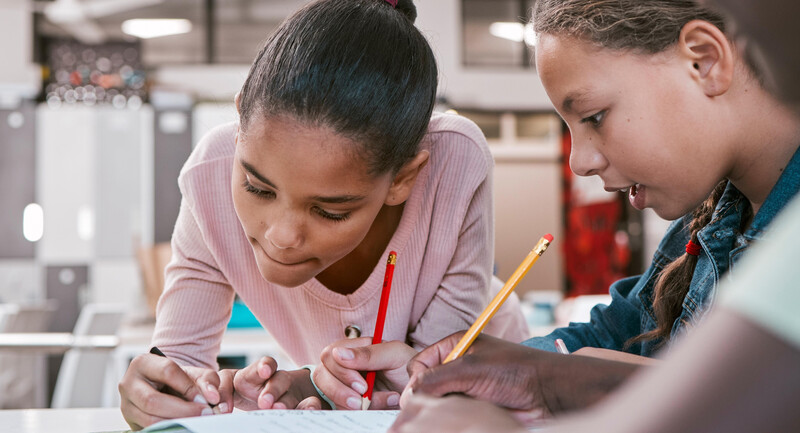
Rigor Is More Than Hard Work

Thriving in the Zone of Productive Struggle
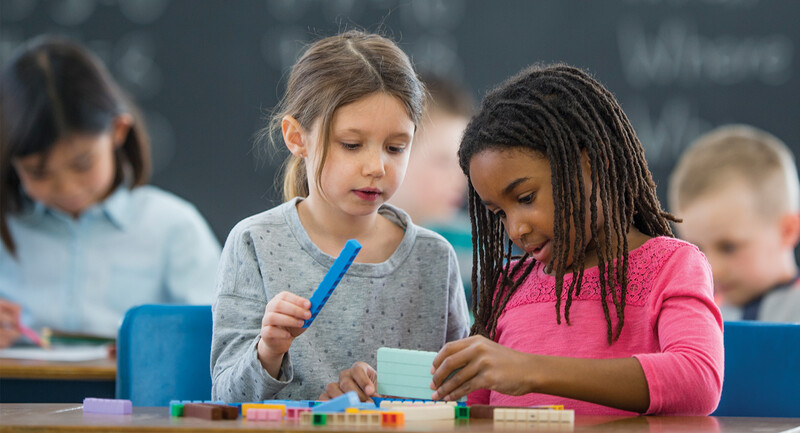
Elevating Elementary Math Instruction
From our issue.
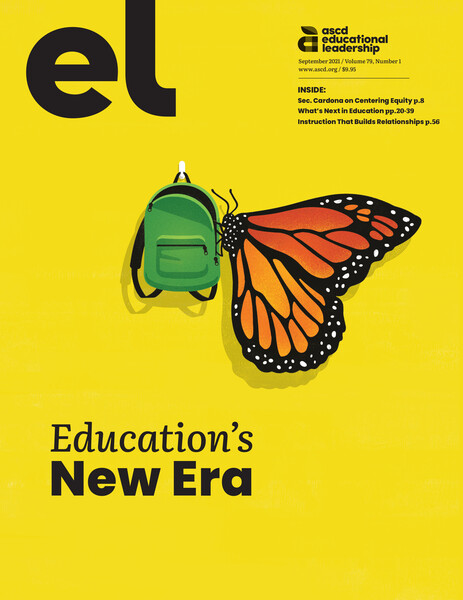
Individualized instruction vs. differentiated instruction

By Ginny Osewalt
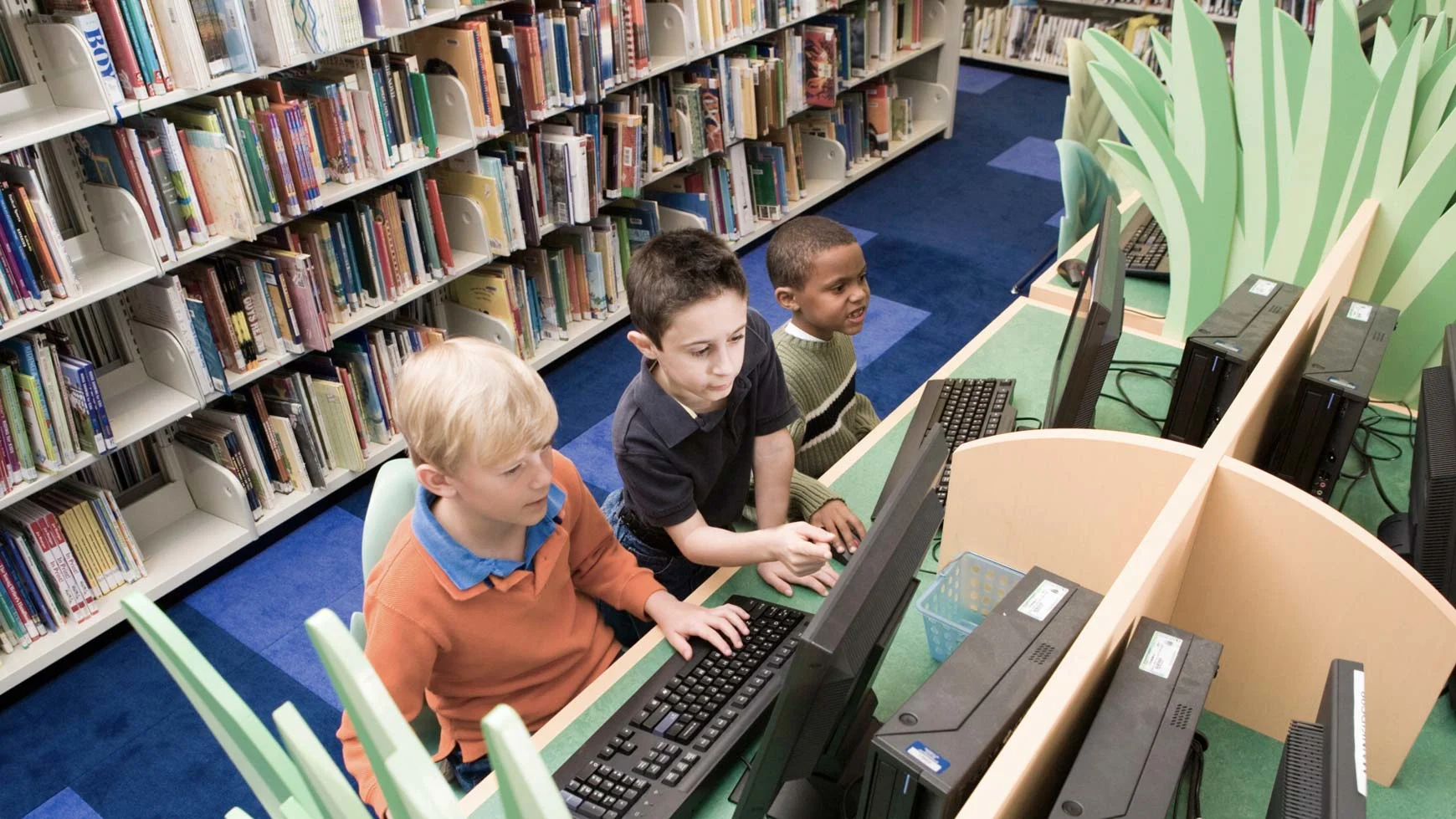
At a glance
Every classroom has a range of students with different kinds of needs.
Differentiated instruction starts with groups of children.
Individualized instruction starts with the needs of one child.
In a typical classroom, you’ll find students who are reading above their grade level and others who are behind. You might find that some learn best by working with other kids, while others prefer working alone. And some students need special help along the way to fill in areas where they struggle.
The best teachers reach all their students by giving the whole class a great experience. But they change up the material a bit for each student. Everyone learns at their own pace.
Which of these is your main concern?
- Can my child get accommodations in class without having an IEP or 504 plan?
- What's the difference between services and supports in special education?
- What is the difference between an IEP and a 504 plan?
- Ask your own question...
Get answers to all your questions with the Understood Assistant .
Differentiated instruction is a teaching method for groups of students. Individualized instruction starts with the needs of the one student. Here’s what you need to know about both approaches.
Differentiated instruction
Flexible groups are at the heart of differentiated instruction . The same students are not in the same group for every activity or assignment. Each student is moved around according to abilities. Teachers design their lessons around the needs of each group. For example, one group might write a paragraph after listening to a reading, while another group puts on a skit. A third group might create a poster or an art project to show what they’ve learned. Students may read books on topics that are closely matched to their reading levels.
Individualized instruction
Individualized instruction focuses on the needs of the individual student. Teaching is specific and targets one need at a time. This teaching method can be used on its own, or it can be part of differentiated teaching. Some students who receive individualized instruction need teachers to help them understand and learn. Other students using the same teaching method can skip topics they already know and go on to advanced information.
Special education is a great example of individualized instruction. Students who receive special education services have an Individualized Education Program (IEP). Through an IEP, the school can meet their individual needs and provide accommodations just for them.
Key takeaways
Flexible groups are a big part of differentiated instruction.
These groups are based on children’s needs and interests.
Individualized instruction targets the needs of one student.
Explore related topics
- Grades 6-12
- School Leaders
Get Your FREE News Literacy Posters! ✨
Every product is independently selected by our team of teacher-reviewers and editors. Things you buy through our links may earn us a commission.
35+ Differentiated Instruction Strategies and Examples for K-12 Classrooms
Personalize the content, process, product, or learning environment.
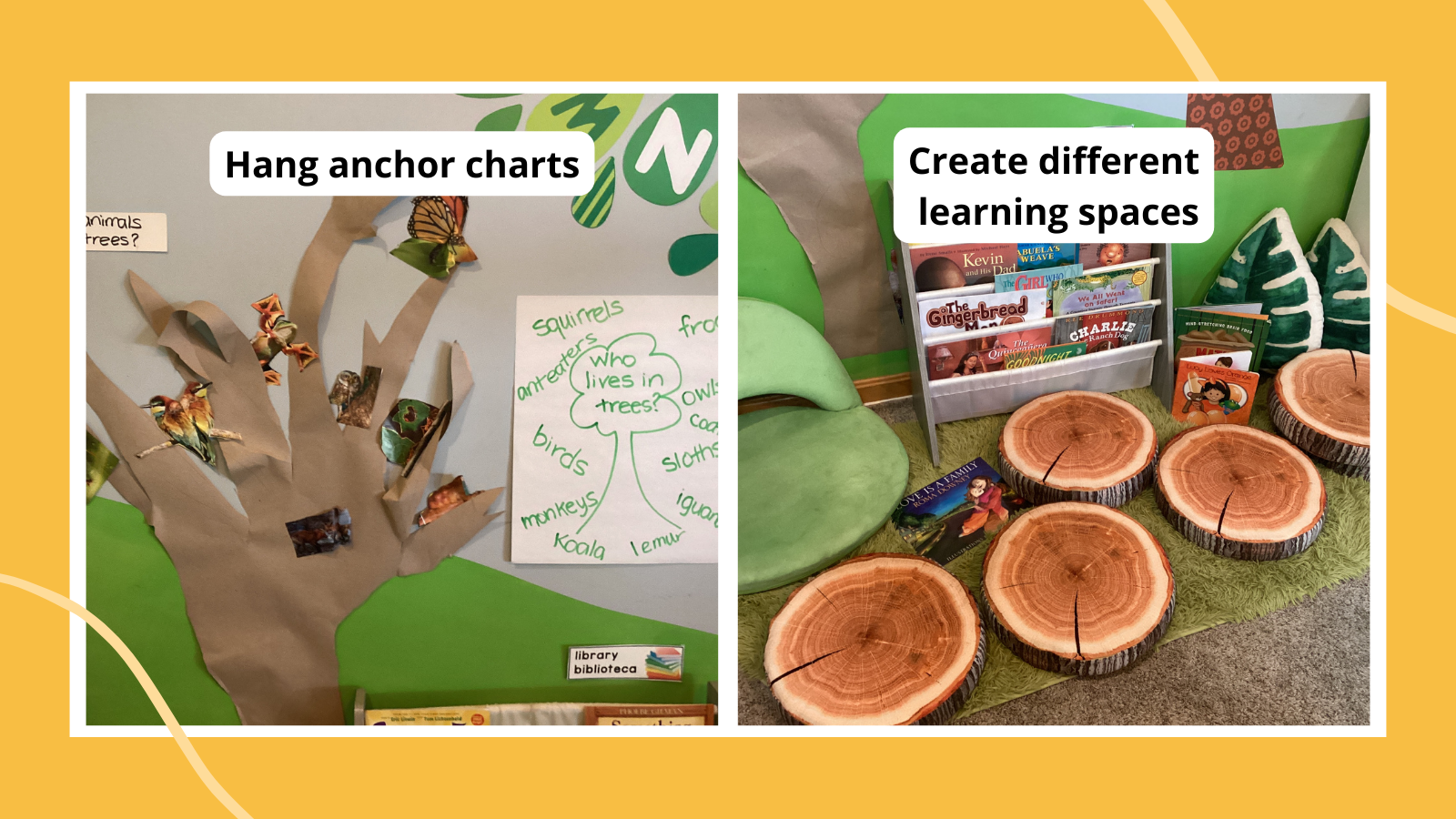
As a teacher, you already know that every student in your classroom is different. They have their own personalities, their own likes and dislikes, and their own ways of learning best. Differentiated instruction strategies give every kid a chance to succeed by adapting the learning to fit their needs. Add these examples of differentiated instruction strategies to your teacher toolkit so you can use them all year long.
What is differentiated instruction?
Differentiated instruction strategies mean tailoring your teaching so all students engage with the curriculum in meaningful ways. The result of differentiated instruction strategies is that all students learn. Carol Ann Tomlinson introduced the concept of differentiation in the 1990s, and now it’s just part of teaching. Tomlinson identified four ways that teachers differentiate:
- Content: What is taught
- Process: How it’s taught
- Product: How students show what they have learned
- Learning environment: The classroom and learning environment
Tomlinson’s differentiation model created new ways for teachers to think about how they provide and shape opportunities for students to engage with content, from flexible seating to choice boards.
Learn more: What Is Differentiated Instruction?
Here are our favorite differentiation strategies to make the aspects of learning work for every student.
Strategies To Differentiate Content
Differentiating content means adjusting lessons and materials based on what students are ready for and depending on students’ strengths and needs. This may mean providing support with vocabulary before students start writing, or helping students build background knowledge before heading into a history unit.
Give pre-assessments
Before you present a new topic, take a few minutes to find out what kids already know. Their responses might change what you decide to teach. If they already know all about area and perimeter of 2D shapes, for example, you may spend less time teaching 2D shapes and move on to 3D shapes.
Use leveled readers
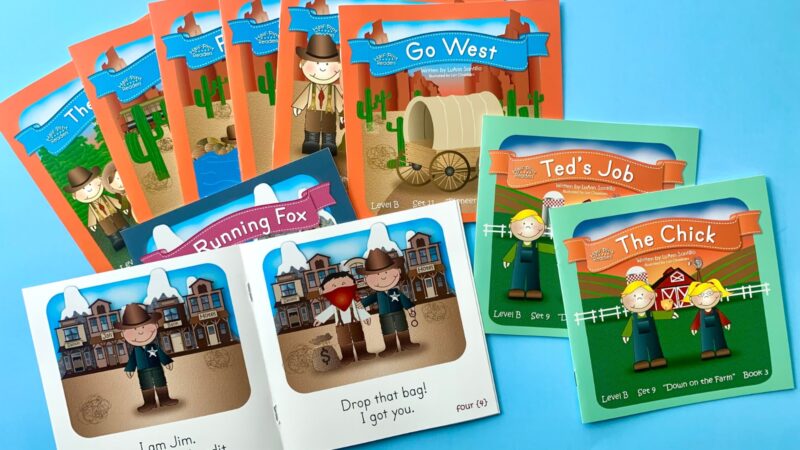
Especially as students learn to read, providing students with books that have sound patterns and words they can read is an important differentiation strategy. As they get older and are reading to learn, provide students with texts that they are familiar with or that you are confident they can access with the reading skills they know. For older students who struggle with reading, using hi-lo books is a great way to give them an engaging experience with text.
Read more: How to use leveled books with the Science of Reading
Use vocabulary lists
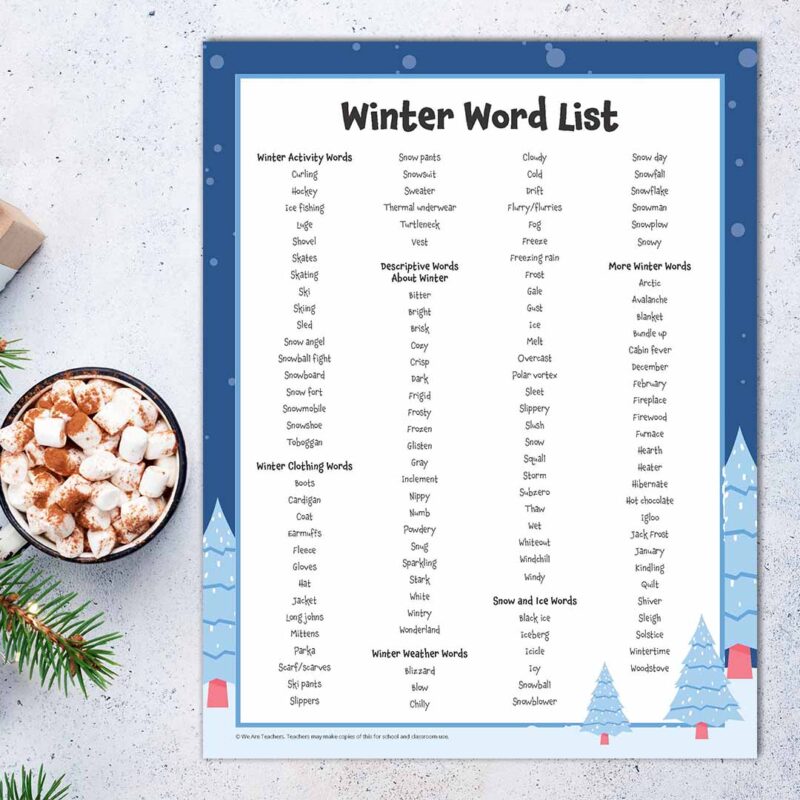
When students are writing or working on projects, offer shorter or longer word lists depending on the students’ background knowledge. Vocabulary lists are a great way to build students’ vocabulary whether they’re learning English or they excel in vocabulary. ADVERTISEMENT
Use our word lists for summer , winter , and seasonal events like Halloween and Valentine’s Day to start differentiating.
Pre-teach knowledge and vocabulary
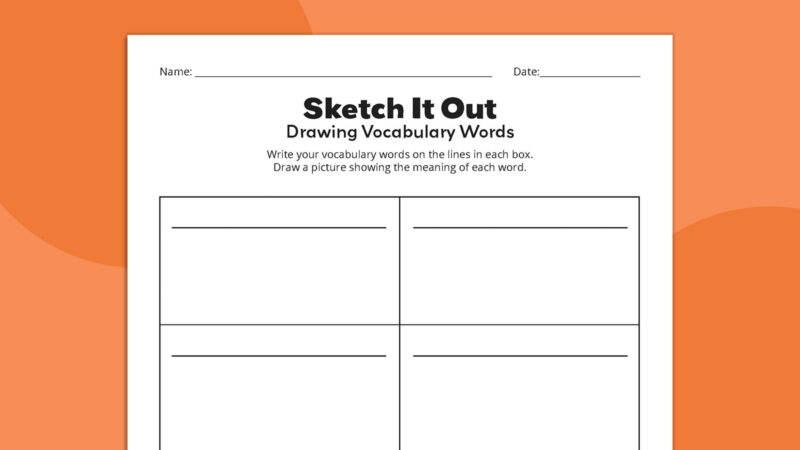
Pre-teach the vocabulary and concepts that students need to know before they engage with a lesson. This could be math concepts (perimeter, area), history terms, or science vocabulary. This strategy is especially important for students who are learning English and those who struggle with reading comprehension because of low vocabulary.
Get it: Vocabulary worksheets
Pre-teach a group of experts
Another way to pre-teach is to teach a small group of students. Then, rely on these students to be your “experts” during whole-group learning. Use this strategy regularly, but switch up the student experts.
Use diverse content
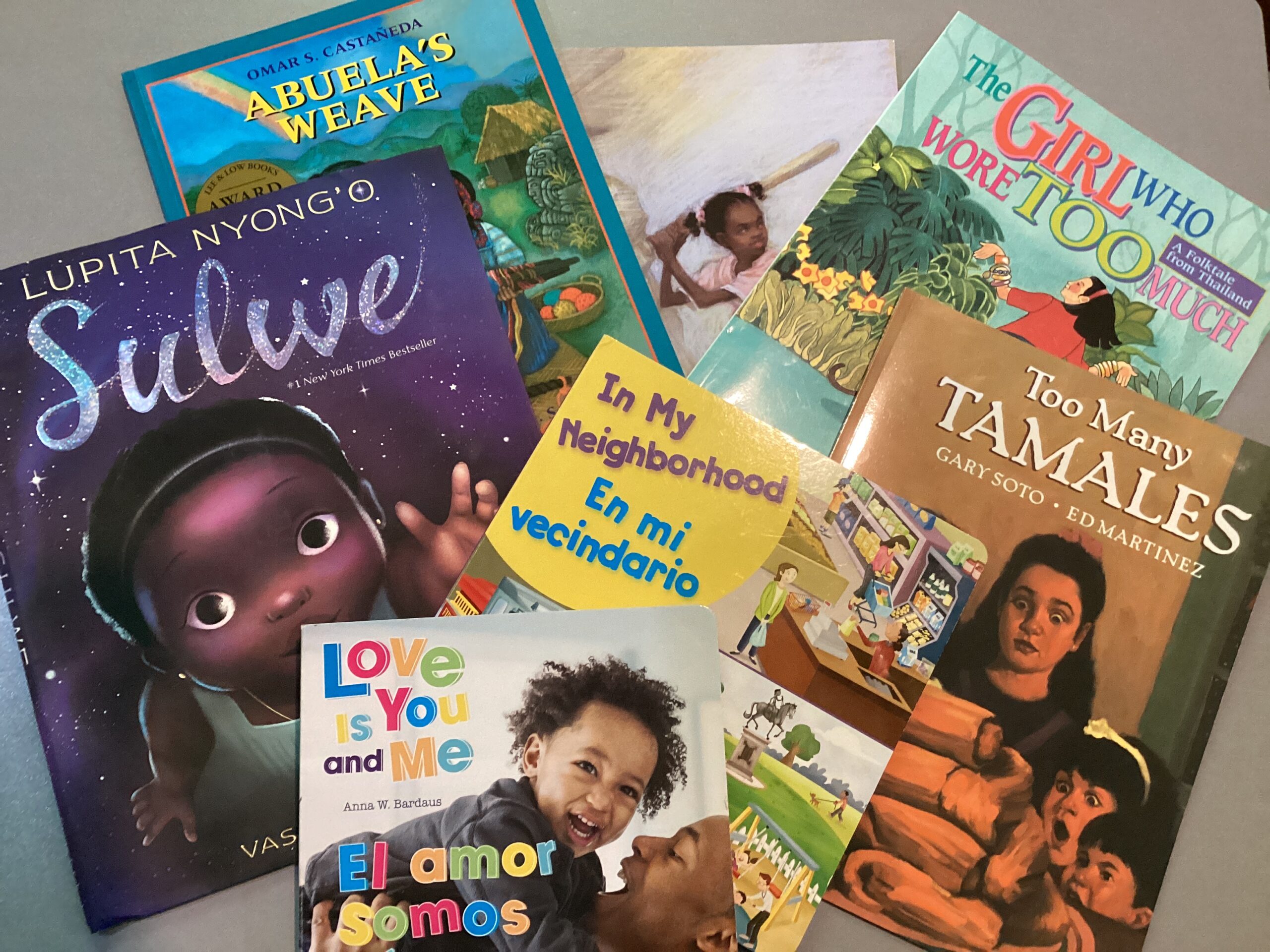
Ensure your reading choices include diverse and multicultural characters, settings, and authors . Having diverse books allows students to connect with content, either by seeing themselves in text or by learning about others’ experiences.
Learn more: What Are Windows, Mirrors, and Sliding Glass Doors?
Strategies To Differentiate Process
When we differentiate process, we’re differentiating how students engage in the learning. The way we ask questions, how we teach students to collaborate, and how we organize the learning experience all impact how students learn.
Be strategic with questions
Create ways for students to answer more difficult questions as they learn more about a topic. That could mean that students engage with open-ended questions as they read more about a science event, or that students think through how a math concept applies to real-world scenarios.
Teach color-coding
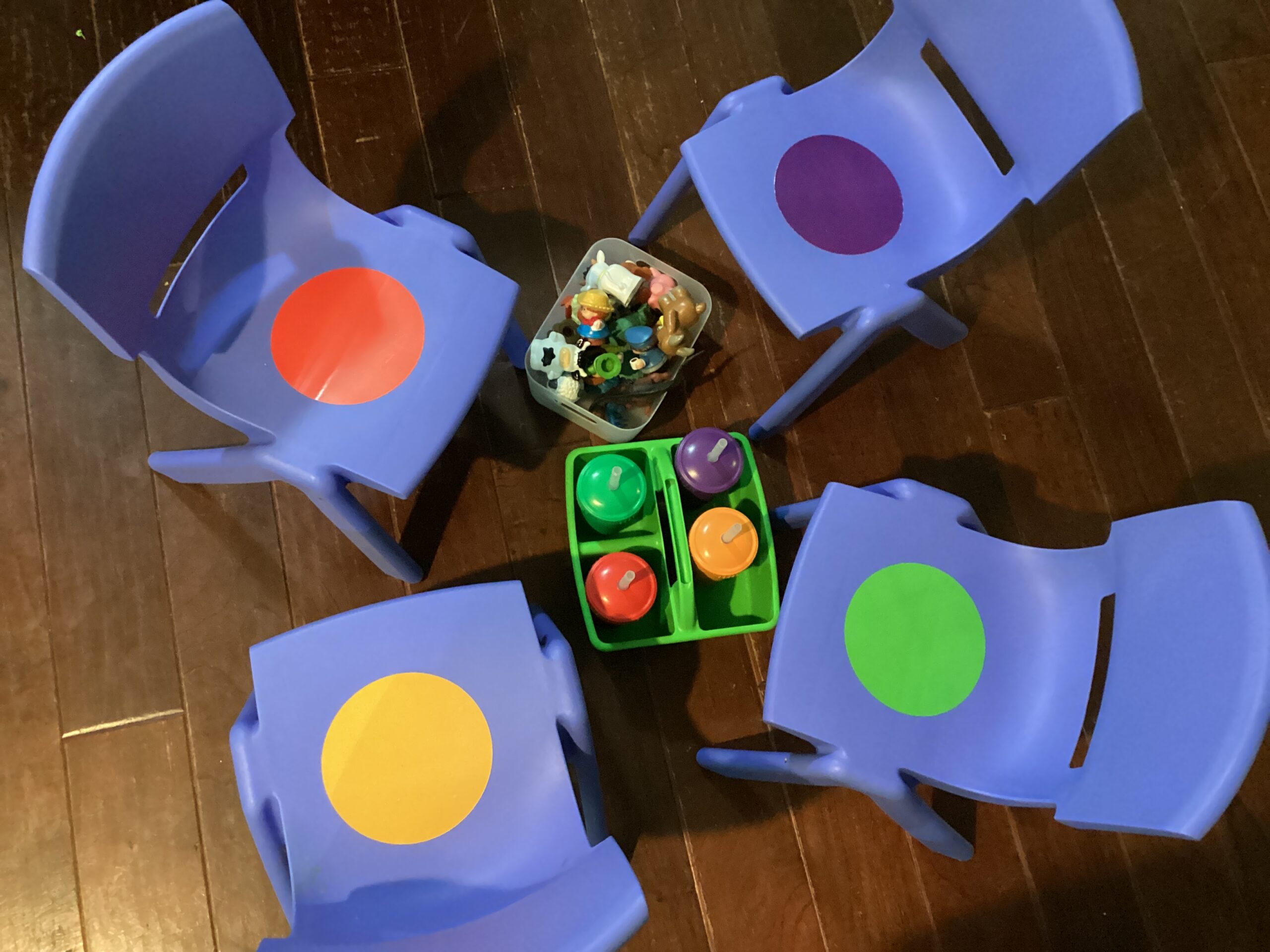
Color-coding can work in all sorts of classroom applications, including organization, routines, and organizing and highlighting content and notes. The idea is to help students use color-coding to bring organization and focus as students are learning.
Learn more: Color-Coding in the Classroom
Implement a stoplight system
As students are working, it’s important to have a system to ensure they’re learning what you want them to. A stoplight system is an easy, nonverbal (read: quiet) way to check for understanding. Each student has three cups—one green, one yellow, and one red. The color of the cup corresponds with how they feel about what they’re learning. Green means they’re good to go, yellow means they’re struggling, and red means they’re stuck entirely. If you don’t have cups, try this with sticky notes or folded desk tents.
Plan cooperative learning
Cooperative learning describes a strategy where students work together in small groups under supervision to accomplish a goal. Create groups based on student needs and abilities. Once you know your students, you can put groups together quickly, and adjust them based on the activity and goal.
Assign must-dos and may-dos
Not all students need extra time; in fact, some finish everything up too quickly! That’s where the ability to provide enrichment activities comes in handy. For any lesson, be prepared with “must-do” and “may-do” activities. This helps kids prioritize the most important items and gives fast finishers meaningful work to do too.
Learn more: The Case for Must-Dos and May-Dos
Use graphic organizers
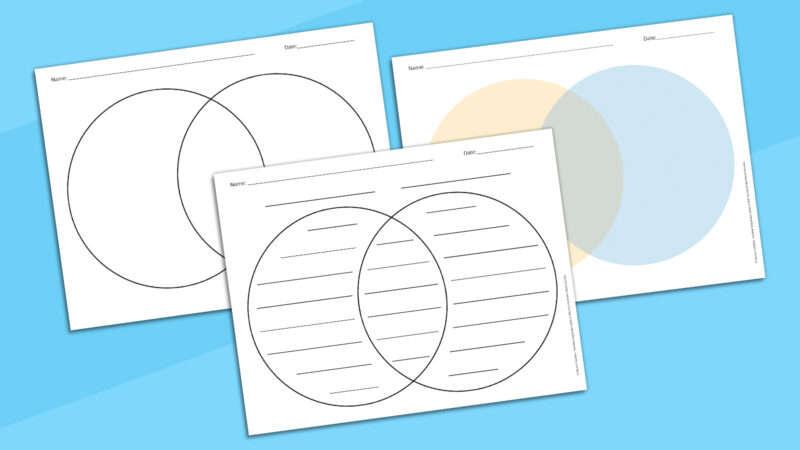
Graphic organizers are a way to organize information using a visual. There are standard graphic organizers, like a timeline or this free Venn diagram printable . Or students can create their own graphic organizers to organize what they’re learning.
Learn more: Graphic Organizers and How To Use Them
Have students lead lessons
Assign students a topic or let them pick their own, then ask them each to become an expert and plan a lesson to share with the class. Encourage them to think of creative ways to share the information, planning interactive activities they themselves would like to do in the classroom. You’re bound to get a lot of new teaching strategies yourself!
Give real-life examples
Whenever possible, use real examples to show kids how a topic applies to real life. In math, money activities can be especially effective. In reading, connect assignments to topics that students are genuinely interested in. The more students see the connection to real life, the more engaged they’ll be.
Let students sketch
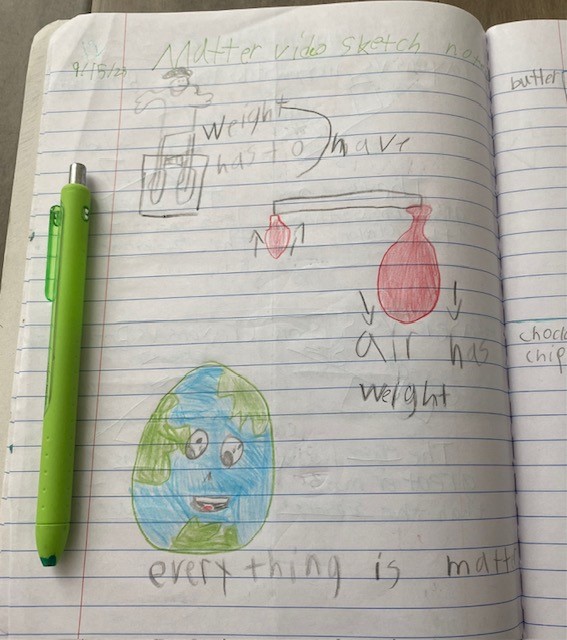
Give students the option of using sketchnotes to keep track of their thoughts and learning about a topic. Teach students the process and how to decide what to capture in their sketchnotes, then provide the option for students that love this type of note-taking.
Learn more: Creative Ways To Use Sketchnotes in Your Classroom
This one is all about teacher patience. When you ask your class a question, don’t immediately call on the first person to raise their hand. Instead, wait a few more seconds, and call on someone whose hand came up a little later. This allows students who need more time to process a chance to get their ideas out too.
Listen to audiobooks
Unless reading itself is key to the topic you’re presenting, consider letting students listen to an audiobook instead. This lets them focus on the content, rather than just the words and sentences.
Learn more: Places Kids Can Listen to Free Audiobooks
Provide writing supports
If handwriting is a challenge, explore options like special pencil grips or try one of these easy hacks . When handwriting isn’t the learning goal, offer kids options like oral responses or typing instead.
Teach with manipulatives
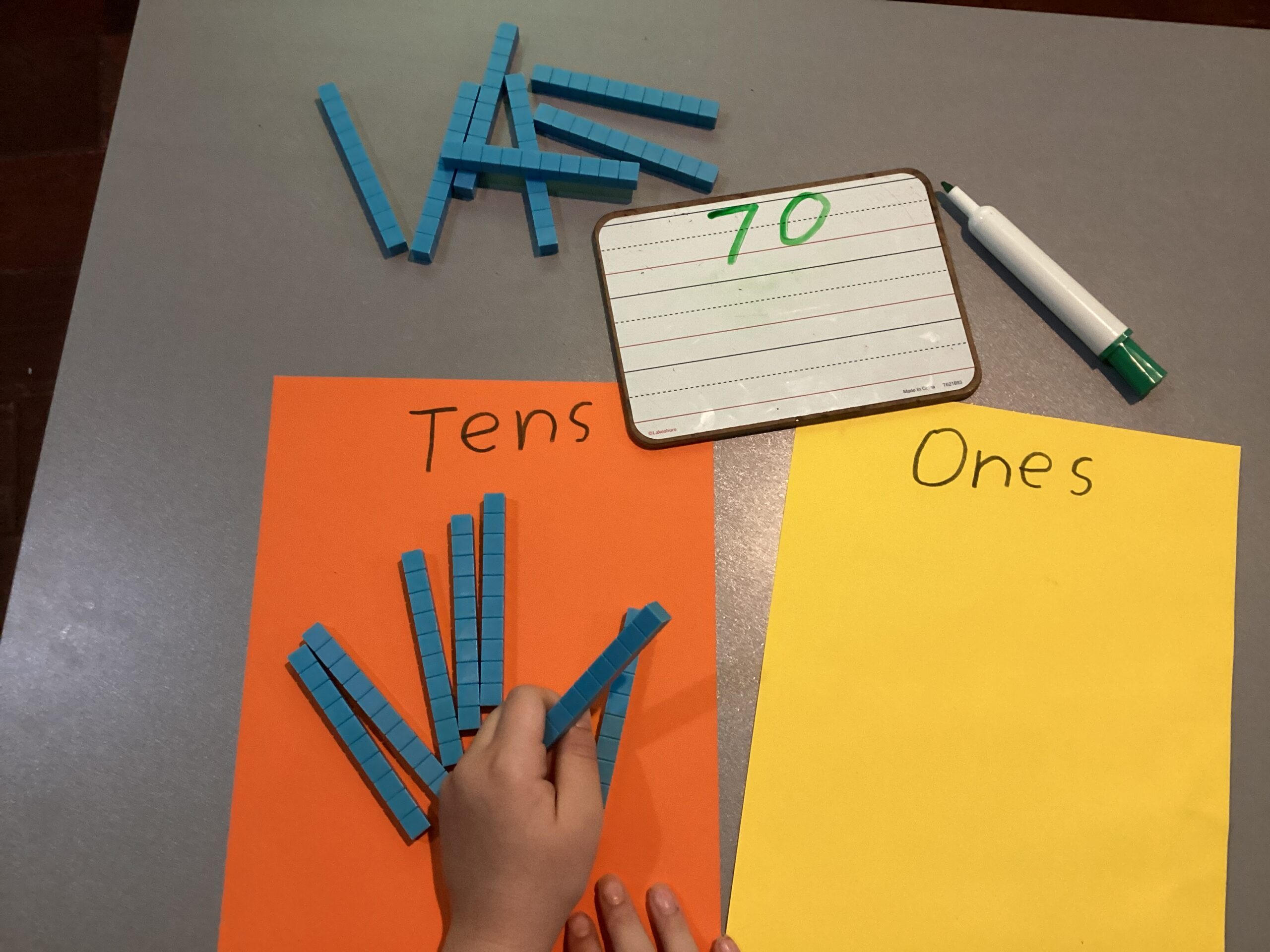
These aren’t just for little kids! Make math manipulatives available to older students too. Having hands-on materials to work with, whether it’s counting out change or showing how many hundreds are in a thousand, helps make concepts more concrete.
Chunk and scaffold
Provide support for students by breaking down learning into manageable chunks and providing teaching opportunities that move students from one small skill to the next.
Learn more: Ways to scaffold instruction
Assign evens or odds
When giving homework assignments or practice worksheets, give students who need extra time the option to complete only the even or odd questions. This gives them effective practice but keeps them motivated.
Self-paced learning
Use computer programs to help students progress at their own pace. Of course, you’ll need to ensure students stay on task when they’re working independently. Also, remember that a computer program may only have the ability to explain things one way, so be ready to step in and give kids information in other ways when needed.
Many students learn best when their bodies are involved. Active math games, like fishing for numbers, stomping on a number line, or jumping to practice math facts, are great ways to practice learning with students’ whole bodies.
Learn more: Active Math Games and Activities
Think-pair-share
Before students share out in a whole group, have them turn to a partner and share their ideas. This way every student can share in a way that feels more comfortable. And you’ll know that every student has had a chance to participate whether they love sharing in the spotlight or not.
Learn more: Fun Alternatives to Think-Pair-Share to get students talking
In a Jigsaw, students are divided into groups. Each group has a text to read and each student is assigned to become an expert on one portion of the text. This breaks a longer text into manageable chunks and allows each student to become an expert. For students who require more support, assign the introduction or conclusion, where information is typically more explicit.
Strategies To Differentiate Product
Differentiating product means letting students have voice and choice in how they present what they learned.
Choice boards
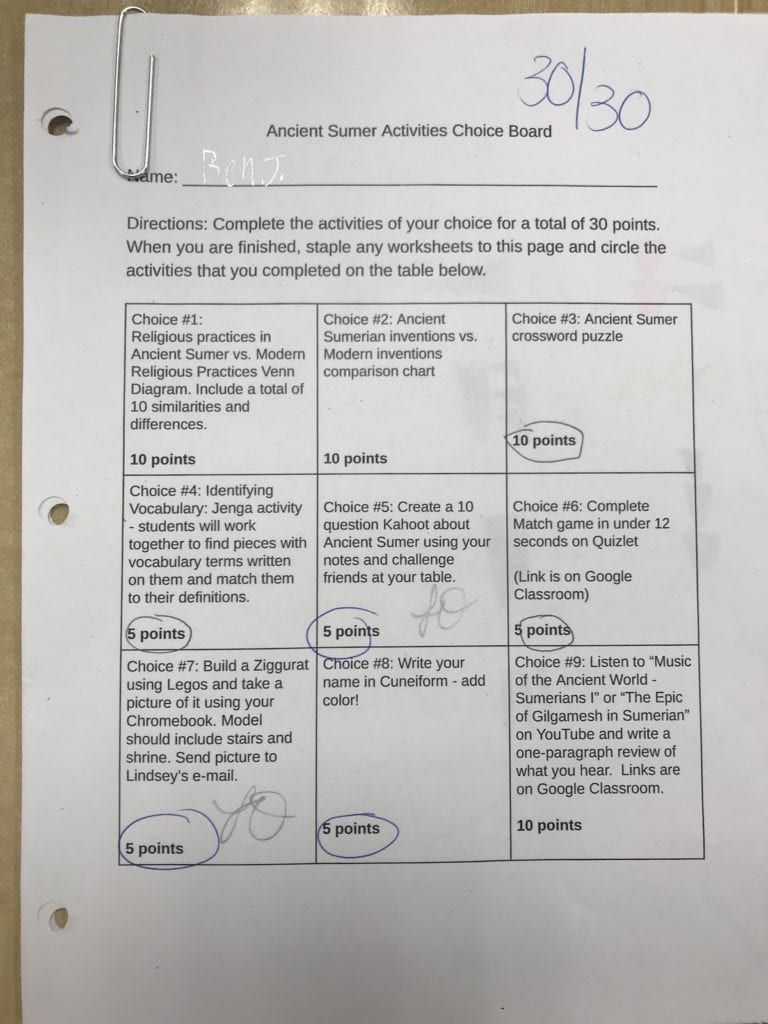
Choice boards are, well, boards, with a few different choices for students to show what they know. Being allowed to pick and choose encourages kids to take responsibility for their choices. To make this work, determine what goals all students need to achieve. Then, let them come up with ways to demonstrate those goals, or give them a few options that appeal to different types of learners.
Learn more: How I Use Choice Boards To Increase Student Engagement
Book reports with choices
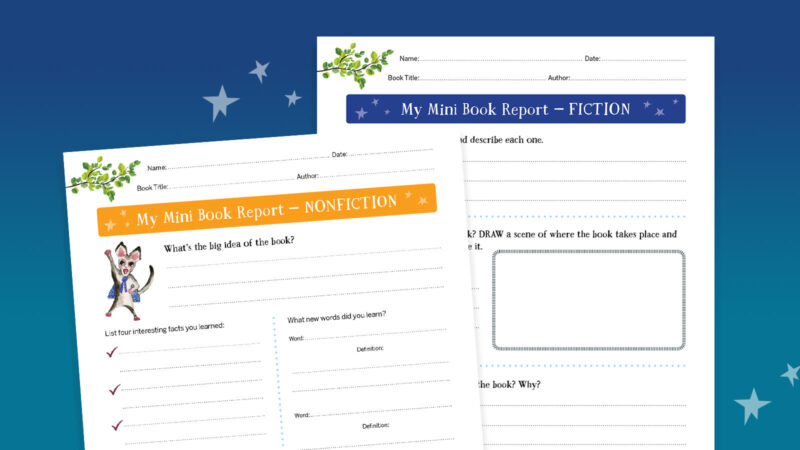
When all students have to read a book and need to report on what they read, differentiate the product with multiple report options. Students can show what they learned through a skit, poster, presentation, and more .
Get it: Free Book Report Printables for Grades 3-5
Alternate assessments
Alternative assessments provide ways to differentiate in your classroom by giving students multiple ways to show what they know. For students who struggle with writing, consider a discussion instead (unless you’re specifically working on writing skills). Instead of a traditional book report, have students turn the story into their own graphic novel. Find ways to help students shine!
Learn more: Alternative Assessment Ideas
Make a game
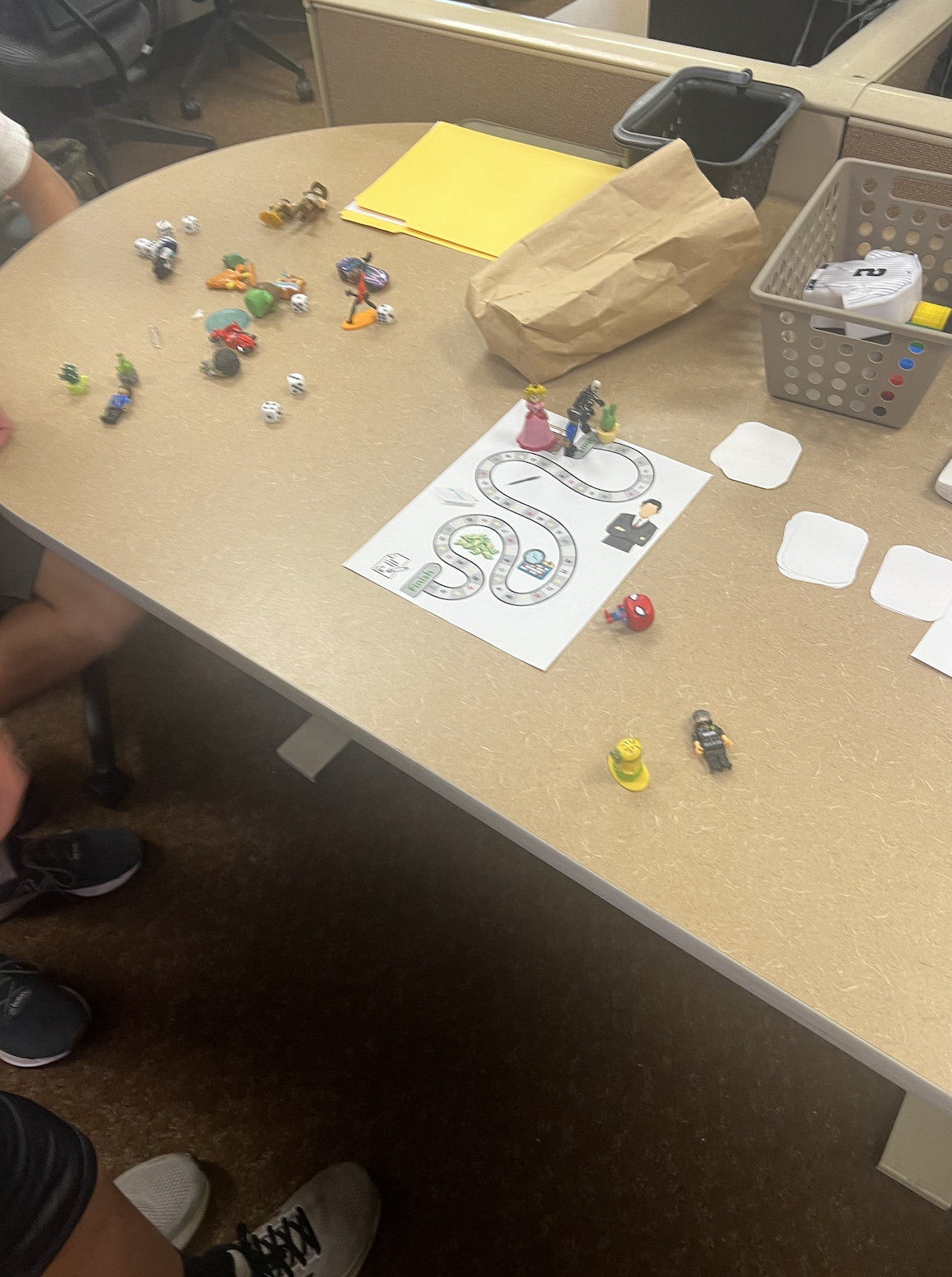
Students in a high school business class create a game to show the role of Human Resource professionals in a company. We love this idea to turn content into a game! It challenges students to use their creativity to explain concepts that, let’s face it, can be a bit dry.
Strategies To Differentiate the Learning Environment
A differentiated learning environment is one where every student has equal access to learning. It’s about routines and procedures and how you set up and use the space every day.
Small groups
Small groups, whether organized by skill level, interest, or randomly assigned, give students a way to learn together.
Learn more: Small Group Instruction Strategies and Tips for Success
Create different learning spaces
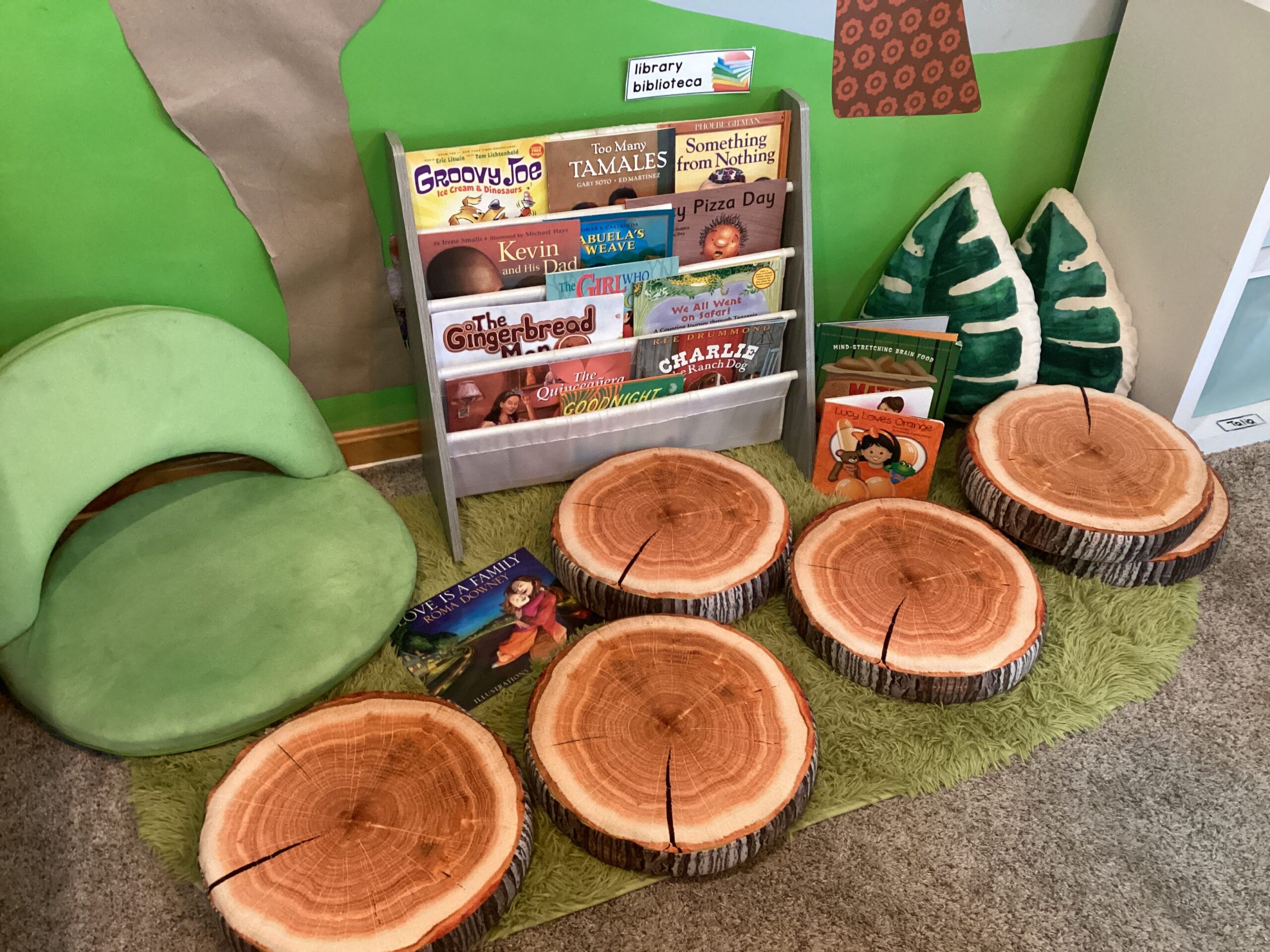
Allow students to choose how they sit (or sprawl) while they’re working. Use pillows, varied lighting, and different types of seating to create spaces for small group collaboration, quiet contemplation, reading, and project work. Provide noise-canceling headphones, fidgets, or other tools to help them concentrate.
Learn more: Types of Learning Spaces To Include in Your Elementary Classroom
Hang anchor charts
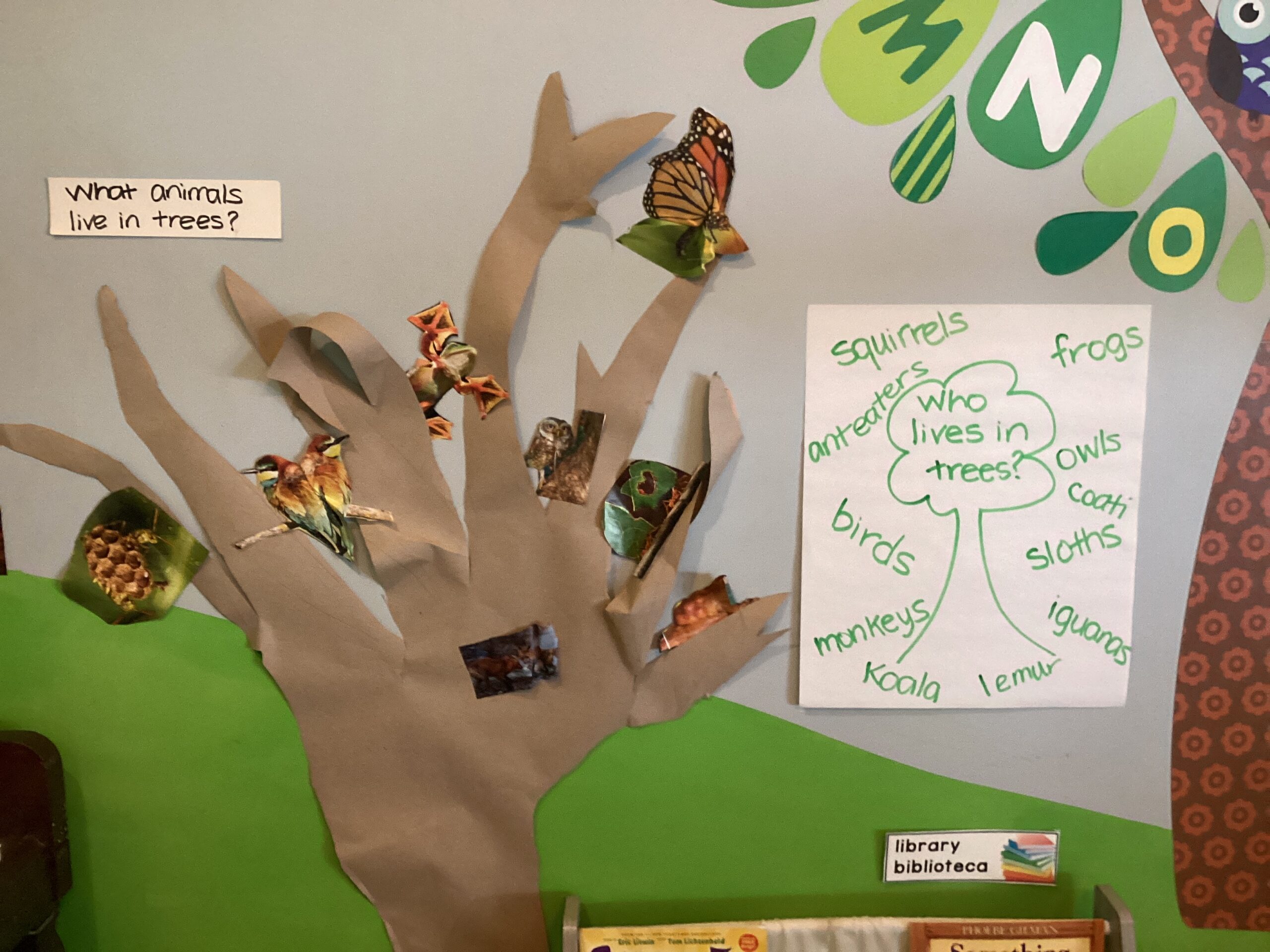
Good news! Those anchor charts hanging all over your walls are a popular differentiation strategy. They give students a reference for important information, and allow them to access information after the lesson is over.
Learn more: Anchor Charts 101
Start peer buddies
Pairing students of varying levels as buddies benefits all kids. Some schools pair those with disabilities with a buddy to help them as needed. Others pair older students with younger ones. Whatever you choose, plan your program carefully and monitor pairings to ensure they’re working out.
Get a co-teacher
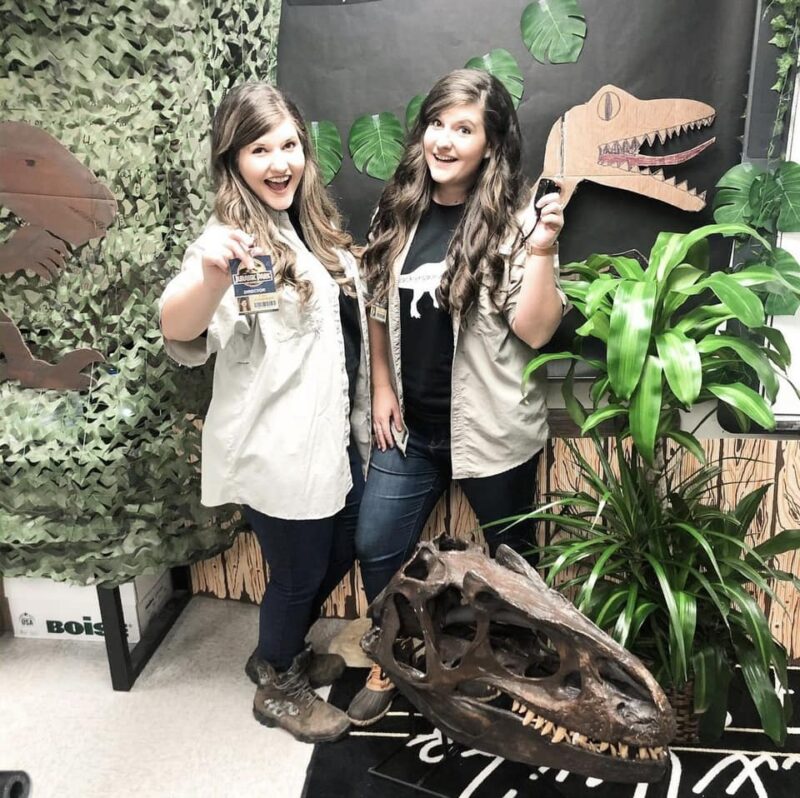
Just as students have different learning styles, teachers have different instructional styles as well. Use this to your advantage! You don’t necessarily need to co-teach full-time. Work as a team with your fellow teachers to learn what their styles are like, and consider switching things up from time to time by trading duties for certain lessons or subjects.
Learn more: Things Successful Co-Teachers Do
Flexible grouping
Instead of leaving students in the same-leveled reading groups at all times, mix up your groupings by interest, readiness, or learning styles.
Flexible seating
Provide different seating options for students. Wobble chairs, pillows, beanbags, and old-fashioned desks and chairs allow students to choose how they work best.
Learn more: How To Make a Pool Noodle Sensory Chair
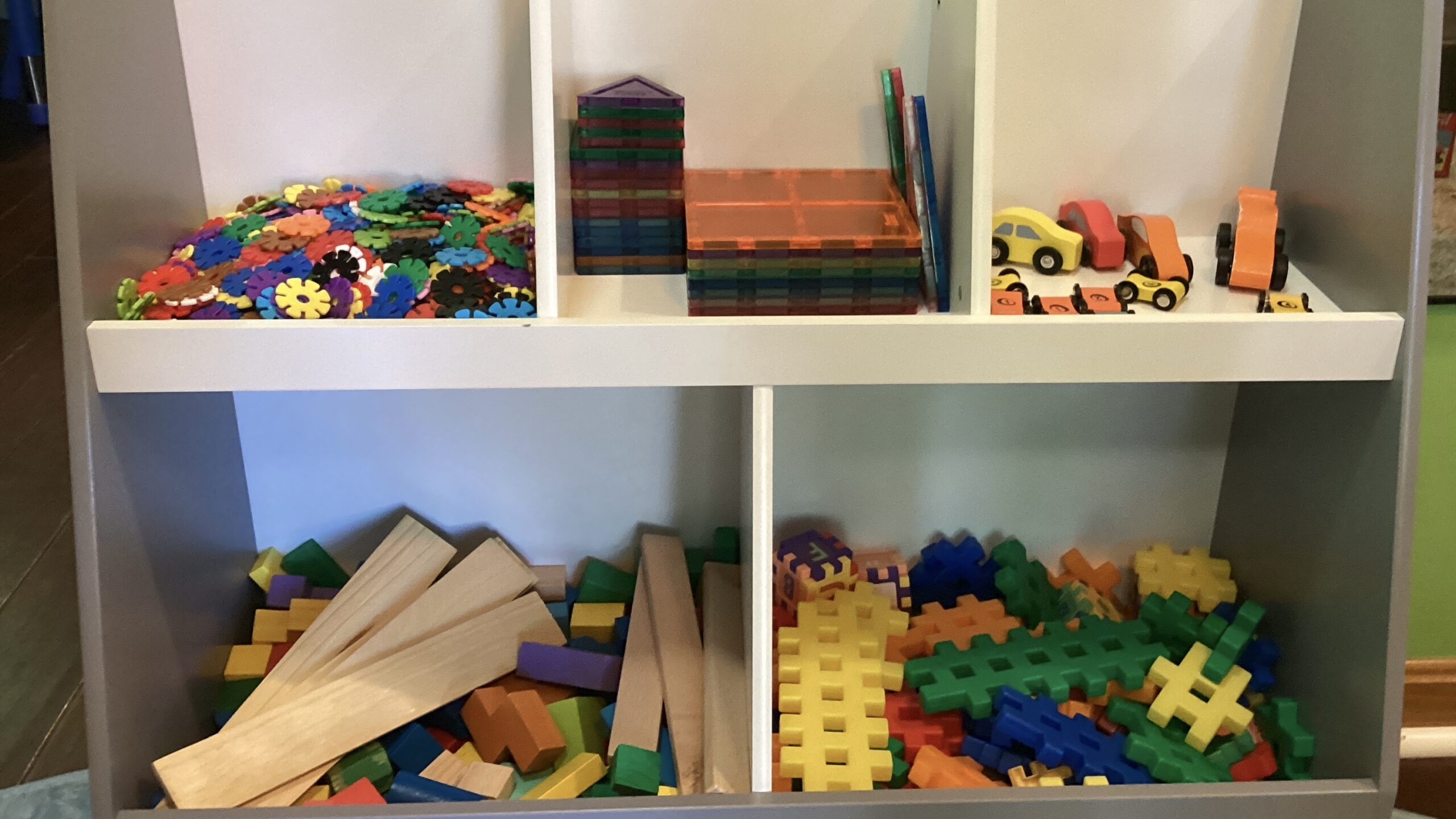
Center work allows kids to go at their own pace and work however they want, without feeling the need to keep up with others.
Check out the big list of K-2 literacy centers to get started.
Student surveys
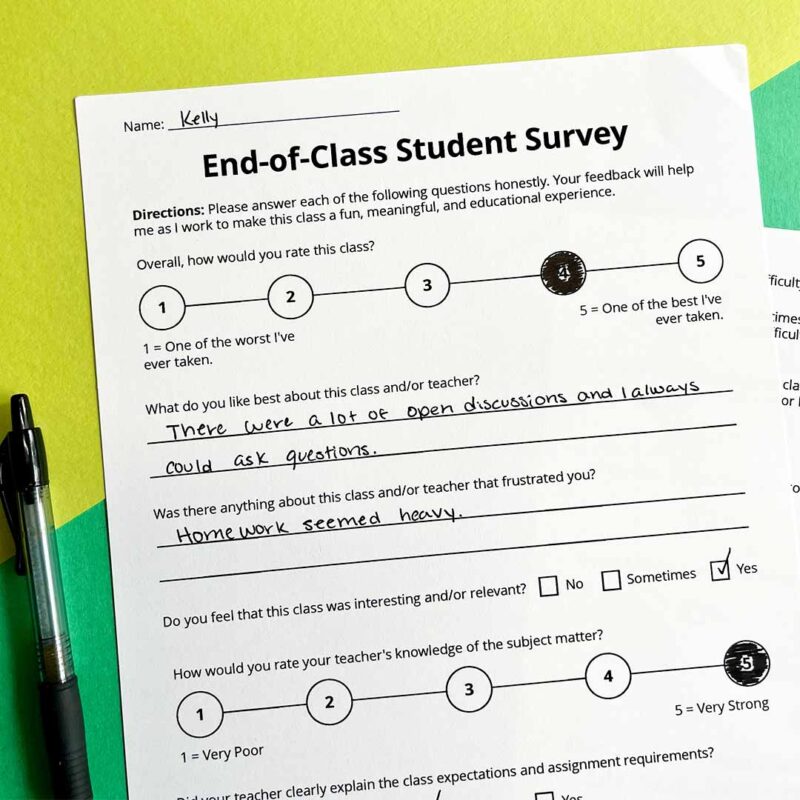
An important way to improve your differentiation is by asking students. Surveying students in conversation or with a formal question-and-answer format, like our printable end-of-class survey, can help you reflect on which aspects of differentiation had the most impact on students and where you can add or adjust differentiation in the future.
Get it: End-of-Class Survey Printable
Differentiated Instruction Strategies Books
- How To Differentiate Instruction in Academically Diverse Classrooms (Tomlinson, 2017)
- Differentiation and the Brain: How Neuroscience Supports the Learner-Friendly Classroom (Sousa/Tomlinson, 2018)
- How To Plan Differentiated Reading Instruction: Resources for Grades K-3 (Walpole/McKenna, 2017)
- Differentiation in the Elementary Grades (Doubet/Hockett, 2017)
- Differentiation in Middle and High School (Doubet/Hockett, 2015)
What are your go-to differentiated instruction strategies? Come share your ideas and ask for advice in the We Are Teachers HELPLINE group on Facebook .
Plus, if you enjoyed these differentiated instruction strategies, check out what is scaffolding in education.
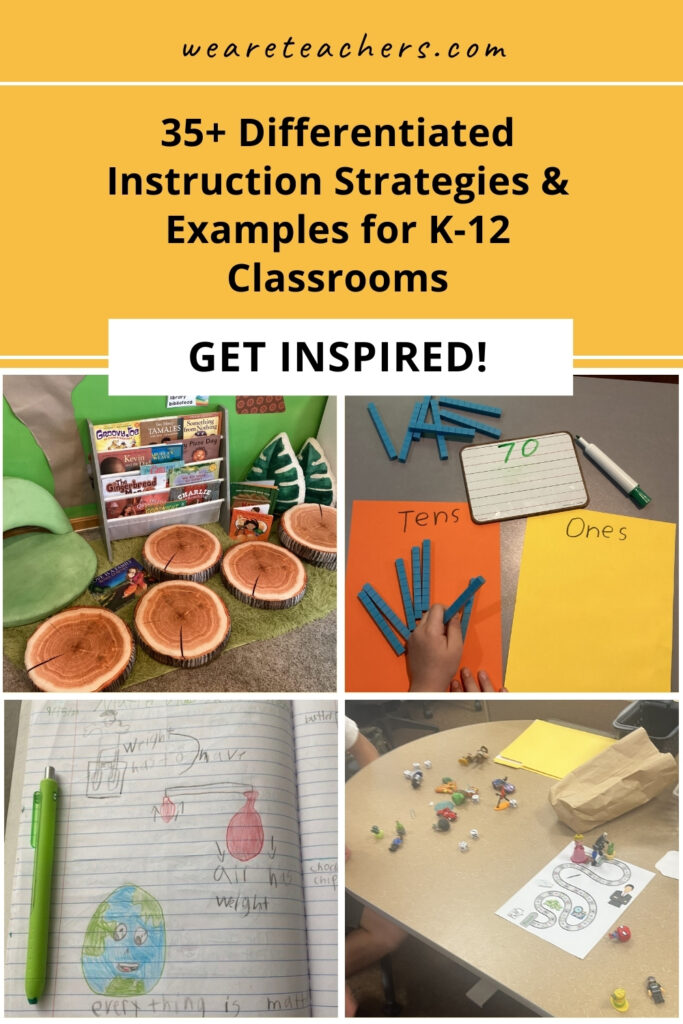
You Might Also Like

What Is Differentiated Instruction?
It's all about teaching so all kids are engaged in learning. Continue Reading
Copyright © 2024. All rights reserved. 5335 Gate Parkway, Jacksonville, FL 32256
Differentiated Instruction

Differentiated Instruction – Strategies, Pros & Cons

Chris Drew (PhD)
Dr. Chris Drew is the founder of the Helpful Professor. He holds a PhD in education and has published over 20 articles in scholarly journals. He is the former editor of the Journal of Learning Development in Higher Education. [Image Descriptor: Photo of Chris]
Learn about our Editorial Process

Differentiated instruction is a student-centered approach to teaching and learning. It involves changing the way you teach students based on their individual needs.
A teacher will teach one topic to a class but give each student a different experience. The differentiated instruction approach is focused on ensuring content and learning environment are flexible to the needs of students.
Differentiation may focus on changing your teaching based on:
- Abilities and disabilities
- Learning styles
- Hobbies and preferences
- A student’s prior knowledge
But there are some downsides.
Pitfalls of differentiated instruction include:
- It’s Time Consuming
- It’s Resource Intensive
- It Leads to Dumbing Down the Content
- It Cannot be Done for Every Student
- It is Unrealistic in Context of Standardized Tests
- The Learning Styles Concept is Unproven
- Students need to Learn in all Different Ways
Definition of Differentiation in Education
Differentiated instruction involves varying the ways a lesson is taught so that it meets the individual needs of students.
You may want to cite a scholarly definition in your essay to show you have consulted a respectable academic source. Here are a few good scholarly definitions that I found:
- ” At its most basic level, differentiation consists of the efforts of teachers to respond to variance among learners in the classroom. Whenever a teacher reaches out to an individual or small group to vary his or her teaching in order to create the best learning experience possible, that teacher is differentiating instruction.” (Tomlinson, 2000, p. 287)
- Differentiation is a teaching strategy that “offers different paths to understanding content, process, and products, considering what is appropriate given a child’s profile of strengths, interests, and styles” (Dixon et al., 2014)
- “Differentiation is responsive instruction designed to meet unique individual student needs” (Watts-Taffe, 2013, p. 303)
Read Also: 31 Examples of Differentiation in the Classroom
Differentiation Strategies
There are four ways to differentiate instruction : varying the content, varying the learning process, varying the assessment, and varying the learning environment (Carol Ann Tomlinson, 2000).
1. Varying the Content
Varying the content involves mixing up what students will learn.
This does not necessarily mean “dumbing things down” for some students – which is a bad thing to do!
Often, it just means getting students to choose an aspect of a topic that catches their imagination.
If an assigned learning outcome on the curriculum is: “Can explain elements of 19th Century history”, you might be able to differentiate instruction by letting your students choose a 19th history figure (soldier, dancer, politician, explorer) that your student is most interested in.
Here, you’re meeting the assessment outcomes while varying the content.
2. Varying the Learning Process
Varying the learning process involves changing the activities involved in learning the content to meet students’ individual needs.
One student might want to do internet research, another might want to use the library books, and another wants to make phone calls to local museums. These are all legitimate differentiated ways of learning the same content – but they give the students maximum choice to keep them engaged.
Often, varying the learning process also means mixing up lessons based on learning modalities . A visual student might be more drawn to watching a video, while a reader might prefer to read a book on the topic. A musical learner meanwhile might want to listen to a song about the topic!
3. Varying the Assessment
Varying assessment involves changing the ways students demonstrate their knowledge of the same content.
It does not (or should not) mean giving one student an easier assessment than another.
Often at college I am asked by the student support team to differentiate assessment for students with anxiety and PTSD. These students will often find it hard to talk in front of a group, so I’ll ask them to write an essay instead.
Sometimes I’ll also have some students with dyslexia or cerebral palsy who are disadvantaged in reading and writing tasks. So, for them, I might ask them to present a poster or verbal presentation that demonstrates they have developed sufficient knowledge of the topic..
4. Varying the Classroom Environment
Varying the classroom environment involves changing the classroom atmosphere to meet a student’s individual needs.
Some students with sensory processing issues (common in autism) often need quiet spaces to learn. When I was teaching in elementary school, I would happily let them go into a quiet room at the back of the classroom to study in peace.
Sometimes it’s great to have a classroom with mixed workstations like the one in this image. It has a classroom layout that lets children choose how to work – in quiet, in groups, on computers, or a mix.

Pros and Cons of Differentiated Instruction
| Pros | Cons |
|---|---|
| 1. Student-Centered | 1. Time Consuming & Resource Intensive |
| 2. Strives for Equity | 2. Often Leads to Dumbing Down the Content |
| 3. Acknowledges Difference | 3. Cannot be Done for Every Student |
| 4. Gives Students Choice | 4. Unrealistic in Context of Standardized Tests |
| 5. Increases Engagement | 5. Learning Styles are Unproven |
| 6. Increasingly Possible with Tech & AI | 6. Students need to Learn in all Different Ways |
Advantages of Differentiation in the Classroom
Advantages of differentiated instruction include:
1. Student-Centered
This approach ensures classes are focused on the needs of the students, not the needs of the teacher.
In past approaches such as the banking model , students were asked to be passive learners . They simply observed the teacher’s instruction.
It also ensures the teacher is focused on the student’s needs. It gets the teacher to think about how they can write lessons that will best help students overcome hurdles and learn in ways that suit them.
2. It Strives for Equity
‘Equity’ means that everyone gets a fair go. It doesn’t mean that everyone is treated exactly the same (see: difference between equity and equality ).
In a differentiated classroom, the class is more equitable because the teacher gives every student due consideration for what their needs really are.
Example: If a teacher was dominantly a visual learner so their learning materials were always very visual, the students who are visual learners would have a big unfair disadvantage in the class. But through varying the way the lesson is taught, the teacher ensures all students get a chance to learn in their preferred way, thereby helping them all to get a better chance at learning the content in their own way.
3. Gives Students Choice
A differentiated classroom allows students to learn in ways that they prefer. We all might have preferences for learning in certain ways.
If we give students some choice about how they want to learn, we empower them to learn in ways that they prefer. This can dramatically improve a student’s learning experience in the classroom.
4. Increasingly Possible with Tech & AI
While it may be very hard to differentiate lessons, it’s getting easier.
We now have technology that learns about students’ strengths, weaknesses and preferences. With technology, teachers can vary the ways lessons are taught much more effectively.
For example, the app Thinkster Math tracks how a student comes to a mathematical answer. It learns how a student learns, and adapts its lessons to make personalized worksheets for students.
5. Increases Engagement
When students are being taught lessons that are targeted at their needs they are more likely to engage in the learning materials. They will feel less isolated. They will also feel like their voices are listened to. Therefore, they will hopefully be more willing to approach schooling with goodwill and excitement. They may even develop a love of learning!
Disadvantages of Differentiation in the Classroom
Disadvantages of differentiated instruction include:
1. Time Consuming & Resource Intensive
Planning six lessons a day is hard enough. Now imagine having to vary each lesson for all your students! It becomes very time consuming.
Similarly, if you want to differentiate the learning process you need a lot of resources. One student might want a computer, another will want books, and another might want to go to the local museum. Suddenly, you’ve got a lot of resources that you need to juggle all for one lesson.
2. Often Leads to Dumbing Down the Content
Too often, teachers see differentiation as permission to dumb down content for students who are struggling. They will vary it so some students have easier lessons than others.
On the one hand, this might make sense because each student learns within their zone of proximal development (learning at the appropriate level). On the other hand, it could also be used as an excuse to have low expectations of students .
3. Cannot be Done for Every Student
It’s unrealistic to differentiate instruction for a whole class of students – each with their own learning style. There are not enough hours in the day to vary lessons for all 25 students in your class.
Teachers therefore often vary lessons not for individual students, but for small groups. They might group students into three or four so they can work in groups. This makes differentiation easier, but cruder and less effective.
4. Unrealistic in the Context of Standardized Tests
Most teachers have to prepare students for standardized tests. These are tests that require students to all complete the exact same exams in the exact same way, and they can’t choose to do exams that suit their learning style.
A standardized test is the exact opposite of a differentiated classroom. So, if we are teaching in varied ways, we’re not actually preparing students for their tests!
5. Learning Styles are Unproven
This approach seems to embrace the concept of ‘learning styles’. It insinuates that different learners have different ways of learning, and that teachers need to acknowledge this in their teaching.
However, extensive research has shown that students’ learning styles are an unproven concept. Namely, Coffield et al. (2004) show that there is no valid research basis underpinning how learning taxonomies are developed, and there is no evidence that people are born better at learning in one way than another.
6. Students need to Learn in all Different Ways
Even if we differentiated learning so students can learn in ways they personally prefer, we may be doing our students a disservice.
For example, if a student says they prefer to learn via movies then books … then they’ll never become better at reading! Perhaps teachers should be encouraging students to learn in ways they find difficult in order to improve on their weaknesses.
Differentiated instruction is a valuable 21st Century approach to education in elementary school, high school and even university. It helps students to overcome barriers to learning and helps teachers to think about how to teach in ways that are most effective.
While the concept can help students learn more effectively, it also has downsides. It can be time consuming and at its worst can even set lower expectations for students in the classroom.
Teachers therefore need to use this approach carefully!
I hope this guide has been helpful for you.
– Prof. Chris.
Coffield, F. J., Moseley, D. V., Hall, E., & Ecclestone, K. (2004). Learning styles: What research has to say to practice. London: Learning and Skills Research Centre.
Dixon, F. A., Yssel, N., McConnell, J. M., & Hardin, T. (2014). Different instruction, professional development, and teacher efficacy. Journal for the Educational Leadership , 37 (2), 111-127.
Tomlinson, C. A. (2000). What is different instruction? In: Callahan, C. M., & Hertberg-Davis, H. L. (Eds.). (2012). Fundamentals of gifted education: Considering multiple perspectives . (pp. 287-300). London: Routledge.
Watts‐Taffe, S., Laster, B. P., Broach, L., Marinak, B., McDonald Connor, C., & Walker‐Dalhouse, D. (2012). Differentiated instruction: Making informed teacher decisions. The Reading Teacher , 66 (4), 303-314.

- Chris Drew (PhD) https://helpfulprofessor.com/author/chris-drew-phd-2/ 10 Reasons you’re Perpetually Single
- Chris Drew (PhD) https://helpfulprofessor.com/author/chris-drew-phd-2/ 20 Montessori Toddler Bedrooms (Design Inspiration)
- Chris Drew (PhD) https://helpfulprofessor.com/author/chris-drew-phd-2/ 21 Montessori Homeschool Setups
- Chris Drew (PhD) https://helpfulprofessor.com/author/chris-drew-phd-2/ 101 Hidden Talents Examples
2 thoughts on “Differentiated Instruction – Strategies, Pros & Cons”
Where is the research to backup the following statement from your article? “Teachers therefore often vary lessons not for individual students, but for small groups. They might group students into three or four so they can work in groups. This makes differentiation easier, but cruder and less effective.” As an Early Childhood Educator with thirty years of classroom experience working with students ages 3-6 years of age from a wide variety of socio-economic backgrounds, I found that statement to be insulting and misguided.

As a teacher myself, I see it on a very regular basis. It’s literally the most common form of “differentiation” that exists.
Leave a Comment Cancel Reply
Your email address will not be published. Required fields are marked *

IMAGES
VIDEO